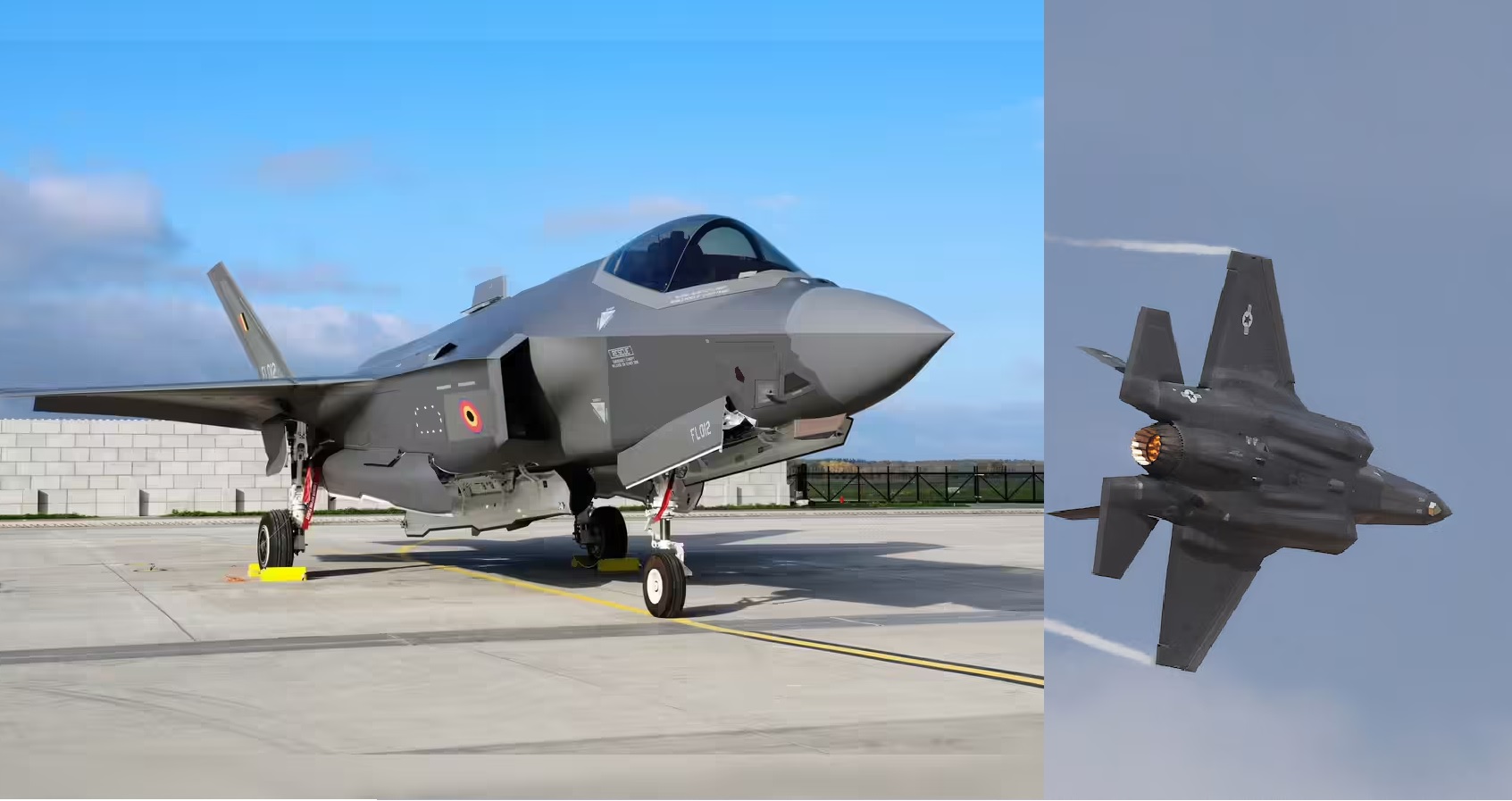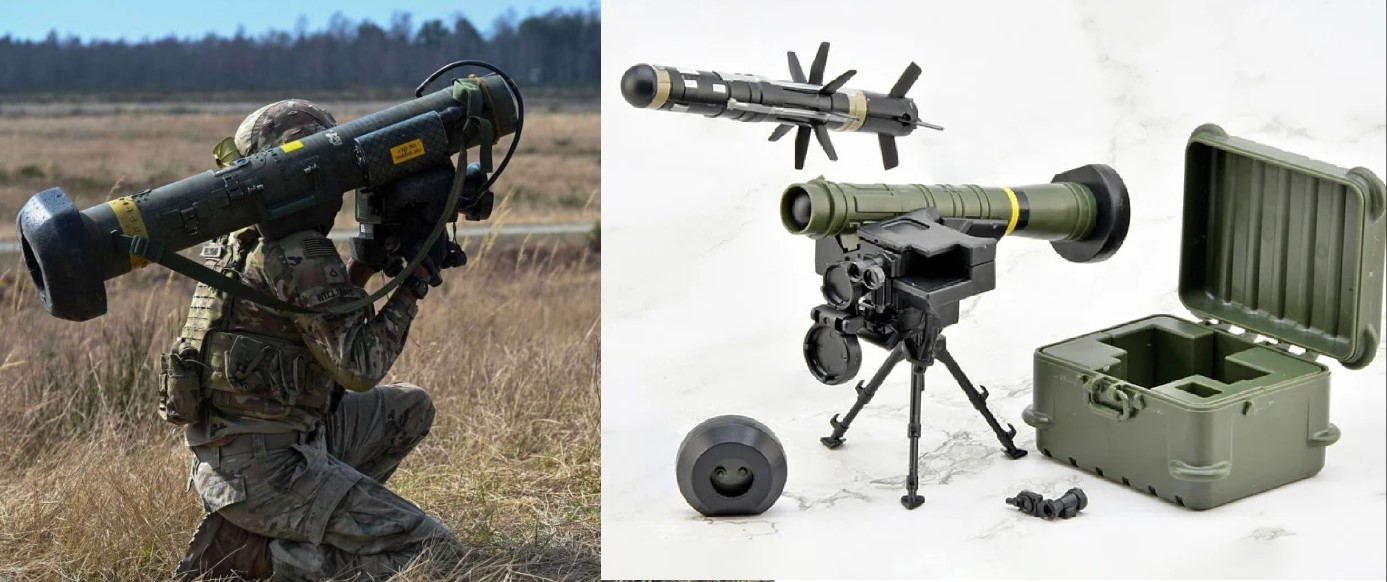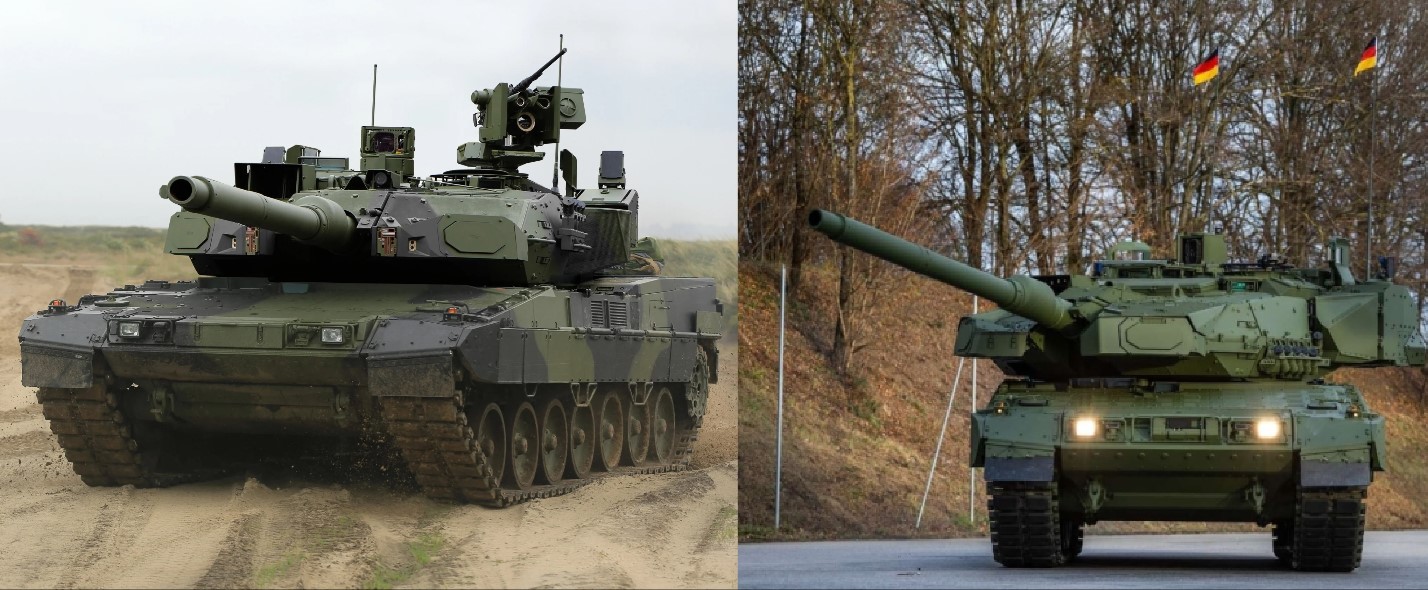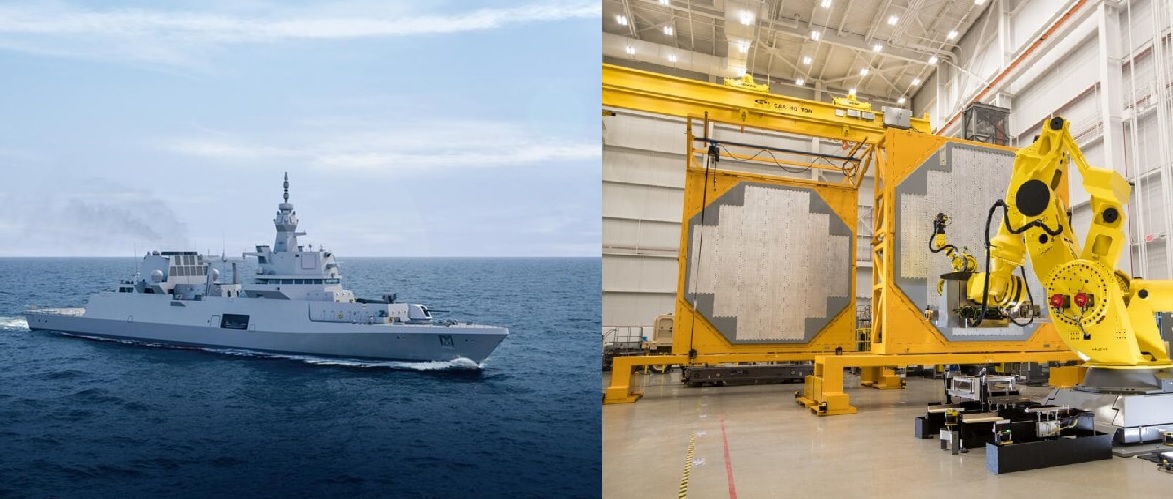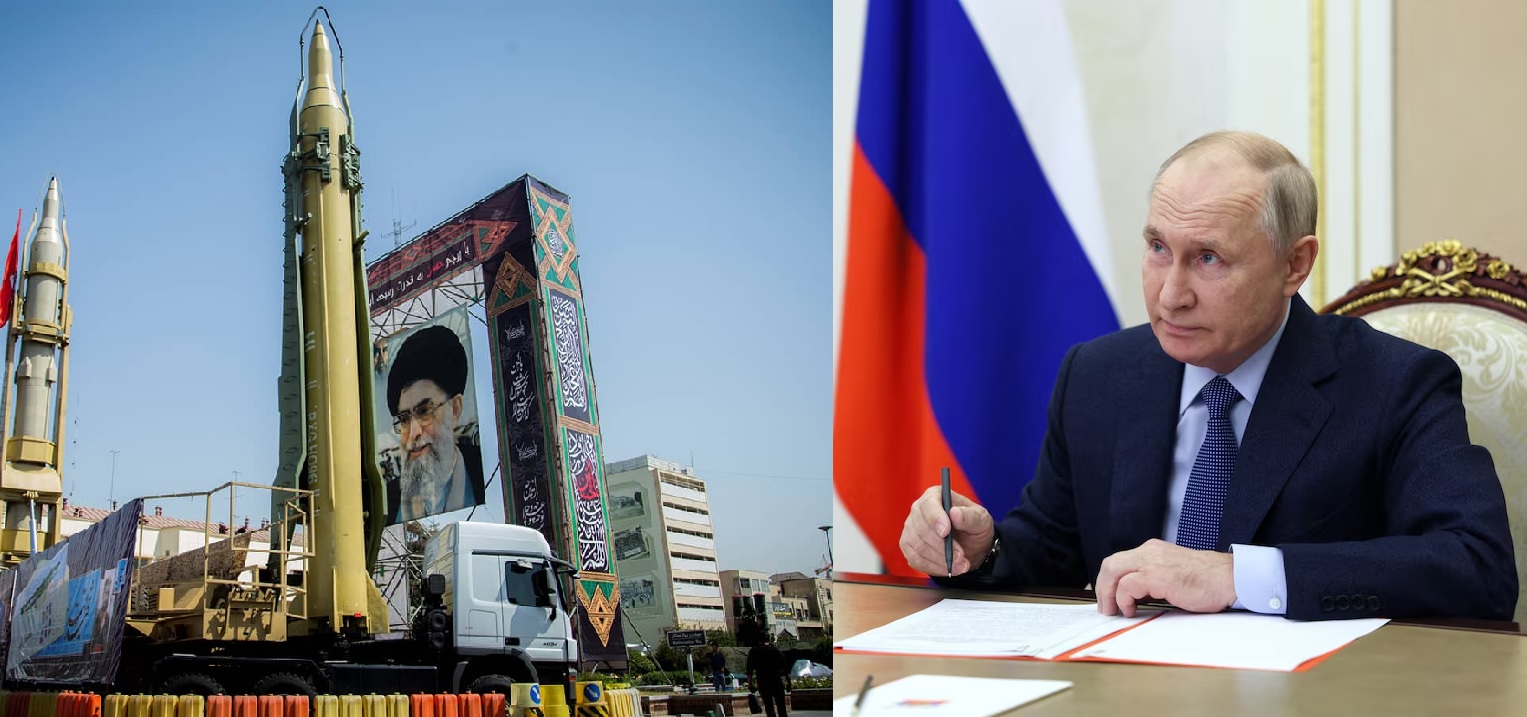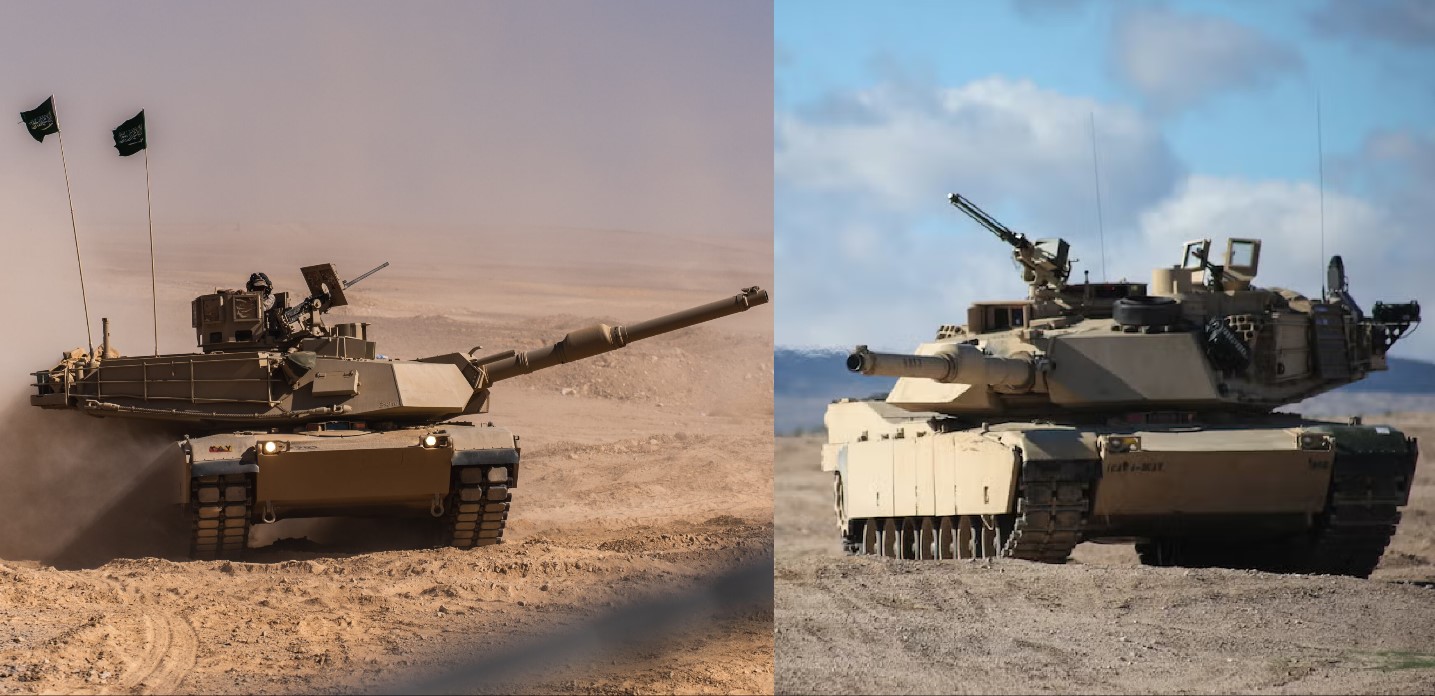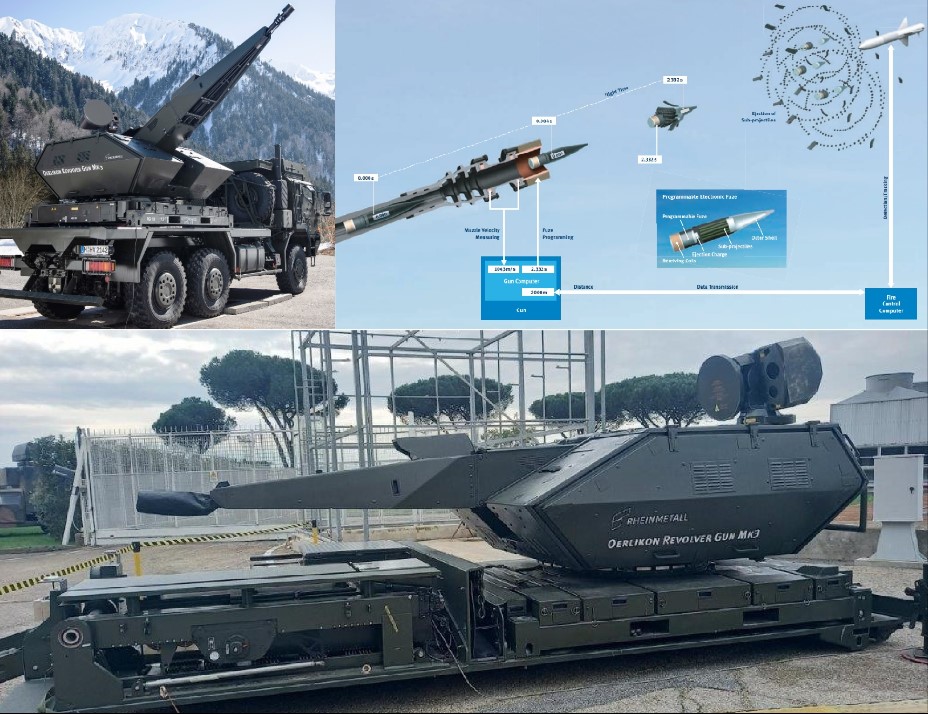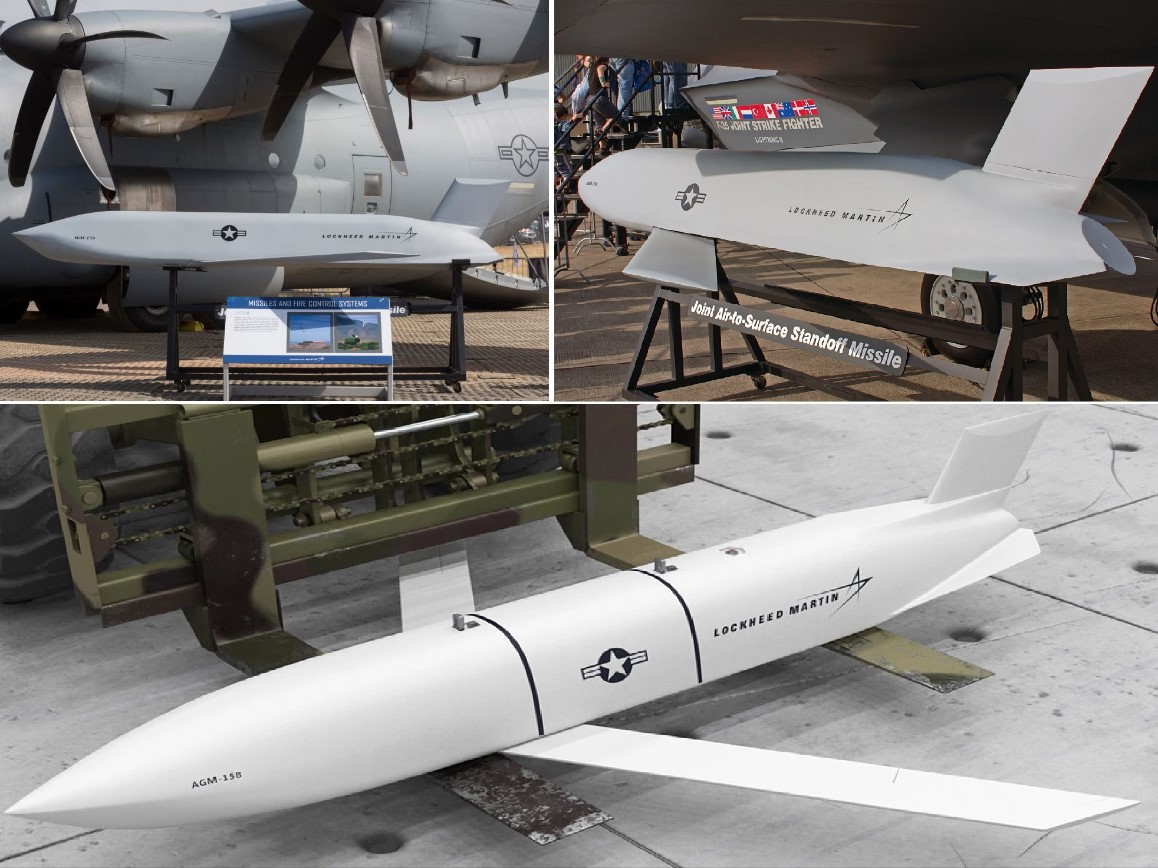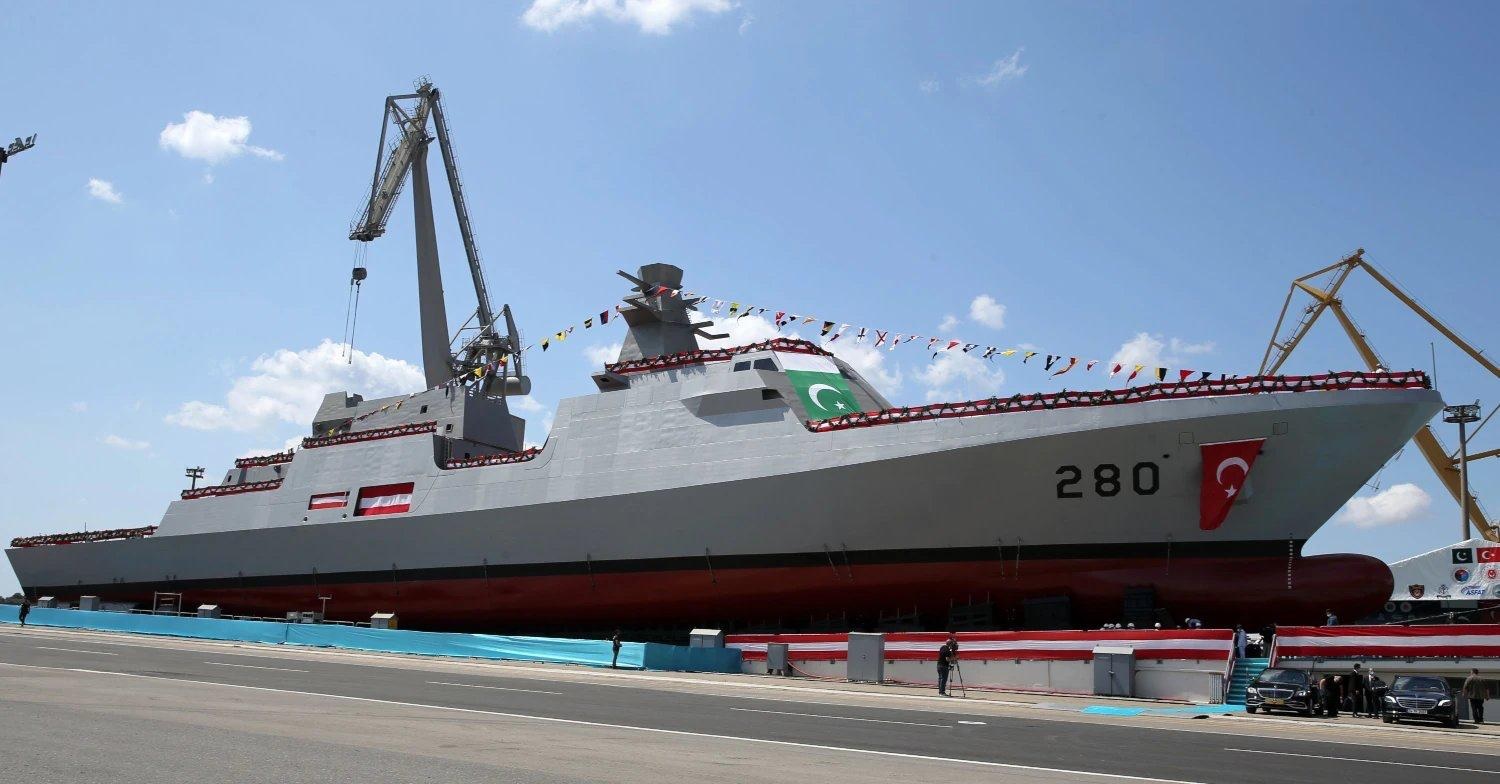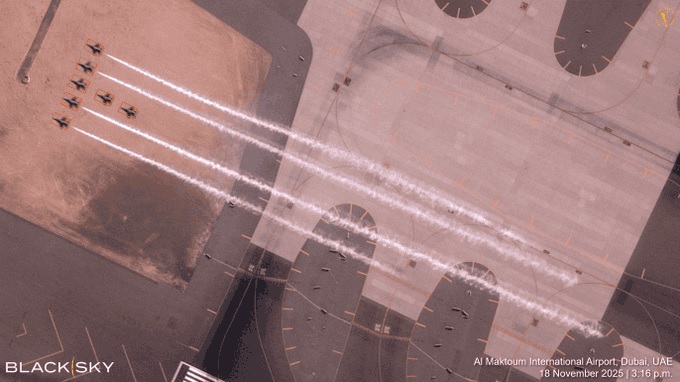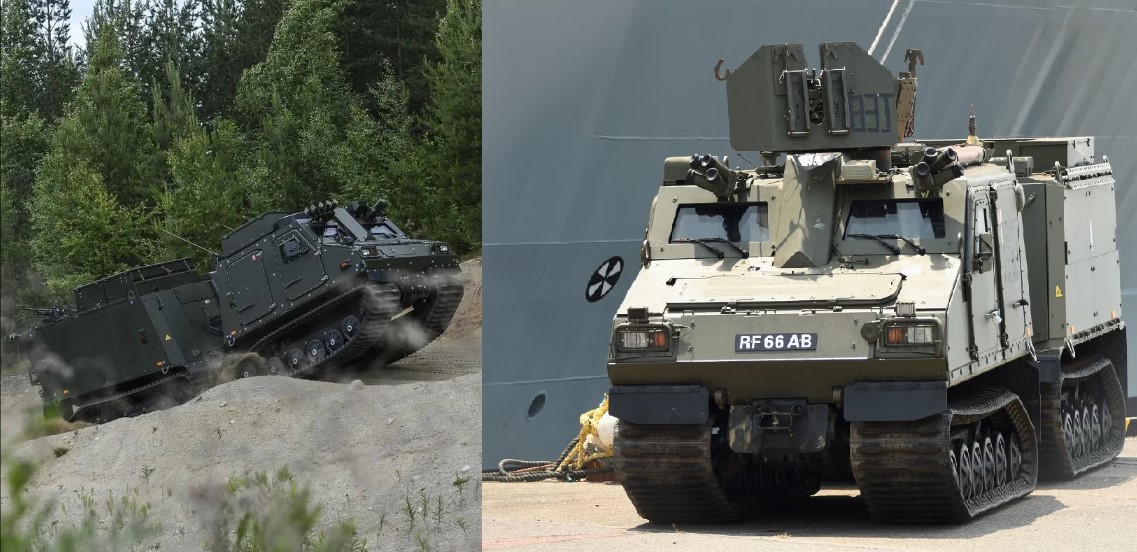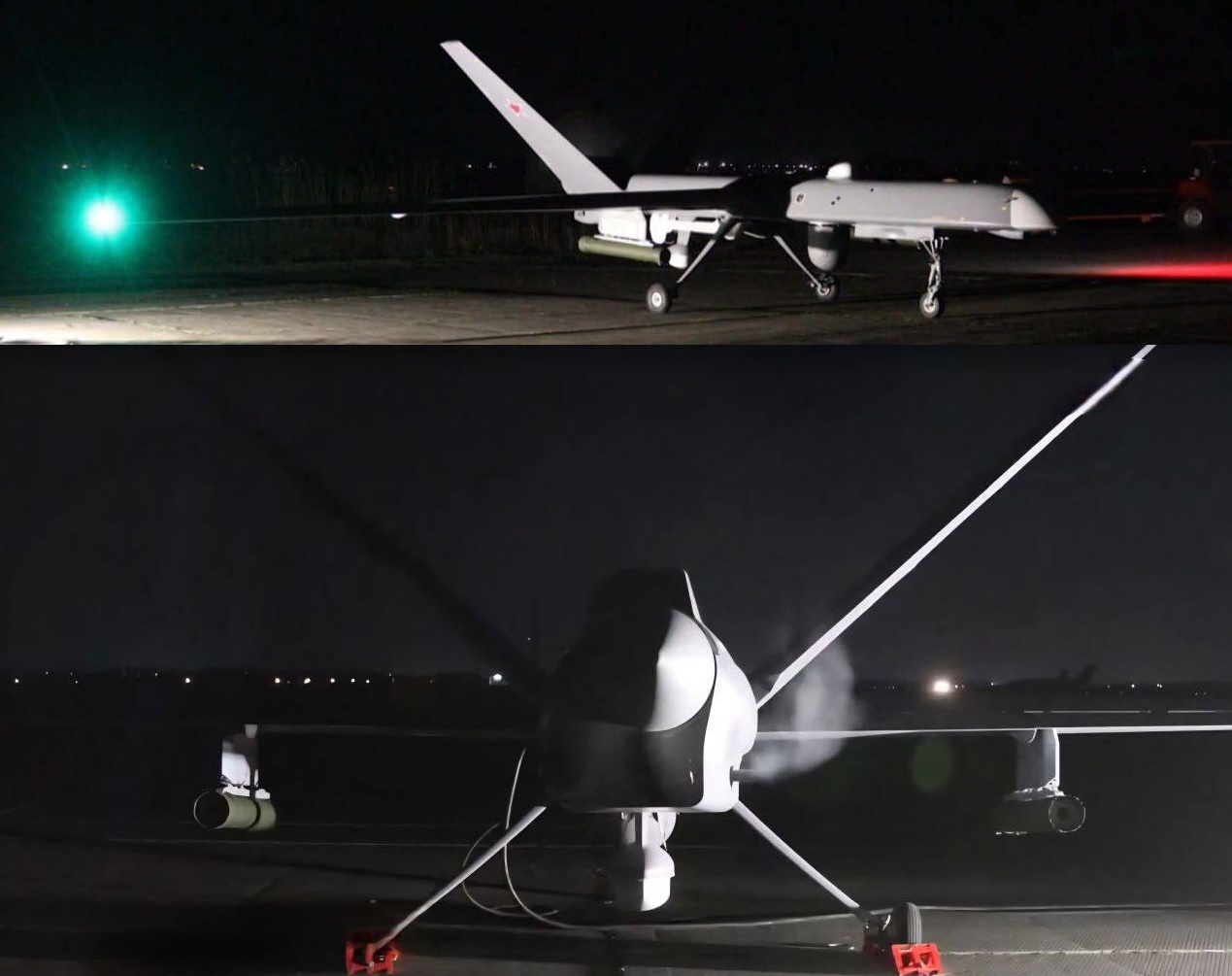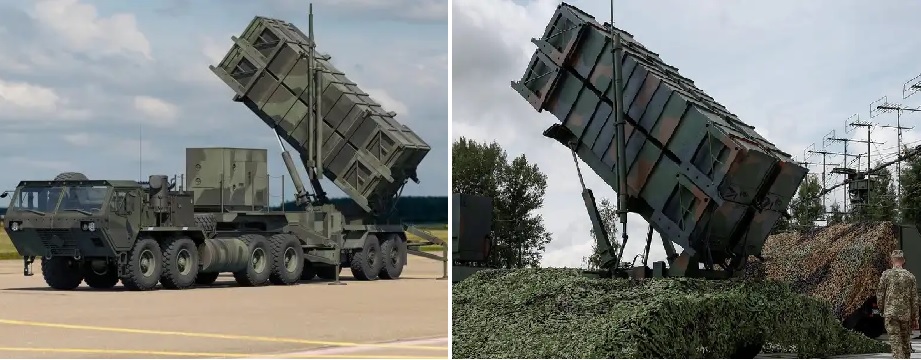World
The United States has agreed in principle to sell F-35 stealth fighter jets to Saudi Arabia, but with major restrictions designed to preserve Israel’s legally protected Qualitative Military Edge (QME) in the Middle East. The decision marks a significant step in U.S.–Saudi defense ties, even as Israel strongly opposes the move despite being the region’s only current F-35 operator. The administration confirmed that Saudi Arabia will receive a reduced-capability version of the aircraft, lacking several of the advanced technologies, weapons, and electronic-warfare systems supplied to Israel. A “Less Advanced” F-35 for Saudi Arabia According to U.S. officials familiar with the review process, the F-35s intended for Saudi Arabia will be substantially downgraded to ensure they do not match or surpass the Israeli Air Force’s F-35I “Adir” jets. Key omissions include: • No advanced Israeli electronic-warfare suiteIsrael’s F-35I carries a custom-built EW system integrated directly into the aircraft—technology not available to any other operator. • No access to the AIM-260 JATMThe U.S. Air Force’s next-generation air-to-air missile, the AIM-260, which outranges current AMRAAM missiles, will not be included in the Saudi package. • Limited software accessThe most sensitive mission software, data-fusion tools, and sovereign-level coding interfaces reserved for Israel will remain off-limits. • Reduced weapons compatibilitySaudi aircraft will not be cleared for several classified U.S. or Israeli weapons integrated into the Adir variant. • No bespoke Israeli enhancementsIsrael’s F-35Is feature locally integrated weapons, communications systems, and mission pods. None of these will be available to Riyadh. Officials stress that while Saudi pilots will operate a fifth-generation fighter, it will be a standard export configuration with added U.S. restrictions — not the tailor-made platform Israel uses. Israel Opposes the Deal Despite Safeguards Israel — the first country outside the U.S. to receive the F-35 — has had the aircraft in active service for eight years, and now operates multiple squadrons. Its defense establishment remains concerned that any sale, even a downgraded one, could dilute its technological advantage. Israeli officials argue that: Saudi Arabia’s acquisition of a stealth platform could complicate Israel’s air dominance Technology leakage risks remain Regional alignments can shift rapidly Israel’s security cabinet and air force have both filed formal objections, but Washington has reiterated that U.S. law requires Israel to maintain superiority — and that requirement is guiding every decision in the Saudi deal. Why the U.S. Is Moving Forward For Washington, the sale is part of a broader geopolitical strategy. Saudi Arabia has pushed for the F-35 for years, and the aircraft was seen as a pivotal bargaining chip in U.S. efforts to encourage Saudi–Israeli normalization and deepen Riyadh’s role in U.S.-led regional security frameworks. American officials describe the sale as a “cornerstone of long-term strategic cooperation” with Saudi Arabia, aimed at countering Iran, strengthening air-defense integration, and binding Riyadh more closely to U.S. security structures. Regional Impact If completed, the sale would represent a historic shift:Saudi Arabia would become the second country in the Middle East to operate a fifth-generation aircraft — even if in restricted form. This move could: Boost Saudi Arabia’s airpower Increase pressure on Iran Tighten U.S.–Saudi military ties Introduce new debate over future weapons balance in the Gulf At the same time, the restrictions on the jets ensure Israel retains: More advanced sensors Deeper software access Superior electronic warfare capabilities Exclusive access to top-tier U.S. and Israeli weaponry What Happens Next The deal must still pass a congressional review. Lawmakers have historically required assurances that Israel’s QME is protected before approving any high-end arms sale in the Middle East. While the sale is not finalized, the political momentum in Washington suggests it is increasingly likely — provided downgraded configurations remain firmly in place. The U.S. decision to sell F-35s to Saudi Arabia marks a major milestone in regional defense politics. But by stripping out advanced weapons, stealth-enhancing electronics, and cutting-edge Israeli technology, Washington is ensuring that Israel’s qualitative military edge — enshrined in U.S. law — remains intact. Even so, the deal continues to generate tension, with Israel urging caution and Washington balancing strategic interests in one of the world’s most complex security landscapes.
Read More → Posted on 2025-11-20 13:23:41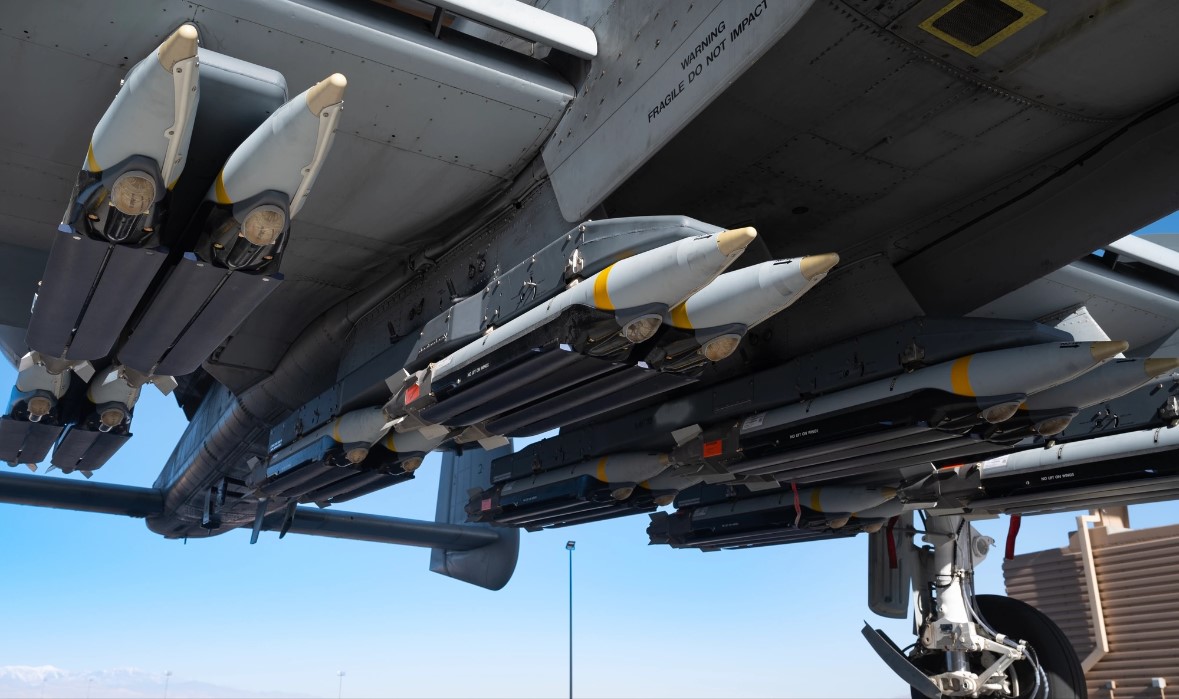
U.S. Approves $82 Million Precision-Weapons Sale to Japan as Tokyo Deepens Stand-Off Strike Strategy
World
The United States has approved an $82 million Foreign Military Sale (FMS) that will supply Japan with a fresh stock of precision air-launched munitions, a move that reflects Tokyo’s accelerating shift toward stand-off strike capability in an increasingly volatile Indo-Pacific region. The announcement came from the Defense Security Cooperation Agency (DSCA), which notified Congress that the State Department had cleared a package including Small Diameter Bombs (SDBs), JDAM tail kits, and general-purpose bombs for the Japan Air Self-Defense Force (JASDF). U.S. officials framed the sale as part of Washington’s commitment to strengthening a key regional ally regarded as central to maintaining stability. A Response to Tokyo’s New Defense Reality Japan had formally requested the weapons earlier this year, seeking to expand the strike potential of its frontline fighters — including the F-15J, F-35A, and the coming F-X sixth-generation platform. That request came as Tokyo reoriented its defense policy, adopting for the first time a doctrine that authorizes long-range counter-strike missions against enemy missile sites and command hubs. The DSCA noted that the variety of munitions included in the package is meant to give Japan both depth and flexibility. The mix supports different mission sets: deep-strike, hardened-target attacks, and precision engagements in contested airspace. Inside the Package: What Japan Is Getting The approved sale delivers a broad suite of air-launched weapons and support systems: GBU-39 Small Diameter Bombs (SDB-I) Joint Direct Attack Munition (JDAM) guidance tail kits Mk-82 and Mk-84 general-purpose bombs Fuzes, containers, and mission planning equipment Training tools, test gear, and manuals Maintenance support, spares, and contractor assistance U.S. defence officials said the package is structured not just as a one-time shipment but as a sustainment-ready system, enabling Japan to integrate, operate, and maintain the weapons over the long term. Weapon Specifications: Precision for a New Era Small Diameter Bomb (SDB-I) Range: ~110 km Warhead: 113-kg focused-penetration explosive Guidance: GPS/INS Role: High-precision strikes with minimal collateral damage. JDAM Tail Kits Convert unguided bombs into GPS-guided precision weapons Accuracy: 5–10 meters Effective across all weather and combat conditions. Mk-82 / Mk-84 General-Purpose Bombs 500-lb and 2,000-lb class Serve as the backbone of U.S. and allied strike capability Compatible with JDAM kits for precision missions. Together, these weapons dramatically expand Japan’s ability to conduct long-range precision strikes, a capability increasingly critical given North Korean missile launches and China’s expanding military footprint. Who Will Deliver the Weapons The DSCA identified several major U.S. defense contractors: Boeing Defense, Space & Security — SDB production Lockheed Martin and Raytheon — JDAM integration and support General Dynamics Ordnance and Tactical Systems — Mk-series bombs These companies will coordinate with Japan’s Ministry of Defense to deliver the munitions and provide training, software updates, and sustainment support. Regional Context: Why Japan Is Expanding Its Strike Arsenal Japan’s order reflects a broader transformation of its military posture. Under its revised National Security Strategy, Tokyo is investing heavily in systems that allow it to conduct stand-off and counter-strike missions. This includes future plans to field U.S. Tomahawk cruise missiles, expand indigenous missile development, and upgrade fighter fleets. As China intensifies pressure around Taiwan and the East China Sea, and North Korea continues rapid missile testing, Japanese officials argue that traditional “shield-only” defense is no longer sufficient. A credible ability to hit back at long range has become essential to Japan’s deterrence strategy. Washington agrees. In its notice, the DSCA emphasized that strengthening Japan’s precision-strike capabilities “supports the security of a major allied nation” and contributes to overall Indo-Pacific stability. Congress will now review the sale, though approval is expected given strong bipartisan support for tighter U.S.–Japan defense cooperation. Once formalized, deliveries will begin through U.S. contractors, followed by integration and training across JASDF squadrons.
Read More → Posted on 2025-11-20 13:00:38World
The British government has confirmed that a Russian spy vessel operating near UK waters north of Scotland used low-powered lasers against a Royal Navy maritime patrol aircraft, in what officials describe as a dangerous and deliberate act of harassment. UK Defence Secretary John Healey revealed the incident in Parliament, stating that British forces tracking the Russian research vessel Yantar were “targeted with lasers” while conducting routine surveillance. The Ministry of Defence later published its findings on X, confirming that the vessel had spent “considerable time in or near British territorial waters” close to the northern tip of the British Isles. Laser Incident Sparks Security Concerns According to the MoD’s report, crew members aboard the Yantar directed low-powered lasers at a Royal Navy P-8 Poseidon Maritime Patrol Aircraft. The aircraft had been deployed to monitor the vessel’s movements after intelligence suggested it was operating near sensitive undersea infrastructure. While the laser was not strong enough to permanently damage sensors or injure the crew, officials emphasised that any laser targeting of aircraft is considered hostile interference. The MoD condemned the action as “unacceptable, irresponsible, and escalatory.” Russian Vessel Suspected of Mapping Undersea Cables The Yantar’s presence has alarmed security officials because the vessel is widely believed to conduct seabed mapping and surveillance activities for Russia’s military intelligence services. Of particular concern is its proximity to undersea telecommunications cables — critical infrastructure that carries vast amounts of internet traffic, financial transactions, and global communications. The MoD confirmed that Yantar's return represents the second Russian spy-ship incursion into UK waters this year, raising fears of a broader campaign targeting NATO undersea networks. To counter the threat, the Royal Navy deployed the Type 23 frigate HMS Somerset (F82) to shadow the vessel continuously. Officials say Yantar’s activities suggest an effort to create detailed maps of undersea cable routes, which could allow Russian forces to tap or sabotage them during future conflicts. Yantar: A ‘Research Vessel’ With Intelligence Capabilities Though officially listed as a “research vessel,” the Yantar is the lead ship of Russia’s Project 22010 class — a fleet widely understood to perform intelligence operations. Over the past decade, Yantar has been tracked conducting suspicious activities across the Atlantic, North Sea, and Barents Sea, often near NATO infrastructure or communication cables. The ship is equipped with: Multiple radomes for signals intelligence A suite of deep-sea sensors Remotely Operated Vehicles (ROVs) capable of reaching and manipulating objects on the seabed Advanced surveillance equipment for subsea mapping Its home port is Severomorsk, headquarters of Russia’s Northern Fleet, from where it routinely sails south into waters around Europe. The MoD released an official photo of HMS Somerset shadowing Yantar during a separate incursion early in 2025 — part of what UK officials call “persistent Russian probing” of European undersea infrastructure. Part of a Wider Russian Espionage Campaign Western intelligence agencies believe the Yantar’s activities are not isolated. Instead, they form part of a multi-layered Russian spying campaign across Europe and the North Atlantic. Recent incidents include: Suspicious drones spotted near military bases and energy facilities in multiple NATO countries Shadow-fleet vessels — commercial ships operating with their transponders turned off — loitering near undersea cables The Eagle S tanker, seized by Finnish authorities in 2024, suspected of involvement in a Baltic Sea cable-cutting incident Multiple surveillance breaches targeting airfields, ports, and energy terminals across Northern Europe In September, Germany deployed the frigate Sachsen (F220) to Denmark to help monitor potential incursions, after reports that shadow-fleet ships may have deployed drones to observe NATO infrastructure. British officials say Russia is likely attempting to build a comprehensive picture of NATO’s critical undersea networks — knowledge that could be exploited in a crisis. UK Response and International Alarm The British government has vowed to strengthen surveillance of its northern maritime approaches and improve protection of seabed communications infrastructure. John Healey told MPs that the UK would “not tolerate any attempt to intimidate or disable our forces,” and pledged closer coordination with NATO partners. Security analysts warn that undersea cables have become a strategic vulnerability, carrying over 95% of global data. Disruptions could cripple financial markets, military communications, and civilian networks. NATO has already announced the expansion of its Seabed Infrastructure Protection initiative, with several allied navies adjusting deployments to monitor Russian movements more closely. The laser incident involving the Yantar highlights intensifying tensions between Russia and NATO at sea. As Moscow steps up its surveillance of undersea networks, the UK and its allies are responding with heightened vigilance — turning the waters north of Scotland into a new centre of strategic competition.
Read More → Posted on 2025-11-20 11:54:01World
A sweeping and highly controversial diplomatic effort is unfolding behind closed doors as U.S. President Donald Trump and Russian President Vladimir Putin work on a secret 28-point peace plan to end the war in Ukraine — a plan that, according to multiple reports, is built largely on Russian conditions. First revealed by Axios and further supported by reporting from the Financial Times and Reuters, the emerging proposal would mark the most dramatic shift yet in U.S. policy toward the conflict, and one that has already alarmed Ukraine and unsettled America’s European allies. Recognition of Russian-Controlled Territories at the Center of the Draft Plan Sources briefed on the negotiations say the draft plan includes a cornerstone concession:U.S. and European recognition of Crimea and much of Donbas as legitimate Russian territory. Such recognition has been a core Russian demand since its 2014 annexation of Crimea and its 2022–25 campaign in eastern Ukraine. For years, Washington firmly rejected any discussion of legitimizing the annexations. Now, the Trump administration appears willing to consider it as part of a broader settlement framework. Deep Cuts to Ukraine’s Military Capabilities Another major element of the plan reportedly demands that Ukraine: Reduce its armed forces by 50%. Remove all long-range missiles and ensure no foreign missile systems are stationed on Ukrainian soil. Prohibit NATO combat aircraft and foreign military bases within Ukraine. These measures would dramatically reshape Ukraine’s defence posture, leaving it with limited ability to deter a future Russian offensive. According to European officials cited in Reuters, the plan mirrors elements of a Gaza-inspired ceasefire model built on phased demilitarization and external monitoring. Cultural and Political Concessions: Language and the Church Moscow is also pushing for cultural and political guarantees: Russian to be declared an official state language in Ukraine. The Russian Orthodox Church to be granted formal status and freedom of operation. Both conditions strike at the core of Ukraine’s national identity and sovereignty, making them among the most politically explosive components of the emerging deal. Though U.S. officials have not confirmed these points, Financial Times reporting describes them as part of Russia’s demands communicated during talks. Negotiations Held Quietly, Away From European Allies The talks, according to Axios, have taken place largely without Europe’s direct involvement. U.S. envoy Steve Witkoff reportedly met Russian sovereign-wealth fund chief Kirill Dmitriev in Miami in October, where work on the document accelerated. European leaders have expressed concern that Washington and Moscow are negotiating “behind Europe’s back,” sidelining nations that have provided billions in aid and borne the brunt of the war’s fallout. A French official told Le Monde that Europe “cannot accept a plan imposed on Ukraine,” warning that a deal dominated by Russian preferences risks abandoning core European security principles. Ukraine Responds With Alarm and Rejection Kyiv has reacted sharply to the reported conditions, warning that the emerging peace plan would amount to a historic setback for the country. Ukrainian officials argue that the proposal would legitimize Russia’s territorial conquests in Crimea and Donbas while simultaneously dismantling Ukraine’s military strength through forced reductions and strict limits on defense capabilities. They warn that accepting such terms would compromise Ukraine’s sovereignty at its core, effectively reducing the nation to a subordinate geopolitical position under Moscow’s influence. President Volodymyr Zelensky’s office has insisted that Ukraine will not accept any agreement recognizing Russian annexations or restricting the country’s sovereign right to defend itself. Ukrainian analysts further contend that embracing the plan would encourage future Russian aggression and undermine decades of international law designed to deter territorial expansion by force. Trump’s Objective: End the War Quickly According to U.S. sources quoted by Reuters, President Trump sees the conflict as “a senseless war draining global stability” and believes a direct deal with Putin is necessary for rapid de-escalation. The 28-point plan reportedly aims to: Establish a long-term ceasefire Define a new European security architecture Reset U.S.–Russia relations Clarify Ukraine’s future military posture Yet the secrecy surrounding the negotiations has raised questions about transparency, alliance unity, and the degree of Ukrainian participation. What Happens Next? The Trump administration is expected to present a formal version of the plan to Kyiv in the coming weeks. Analysts believe Ukraine may refuse the terms outright, leaving Washington and Moscow to decide how to proceed. European diplomats worry that if the U.S. pressures Ukraine to accept the deal, it could fracture NATO unity and lead to political turmoil across multiple capitals. For now, the world waits to see whether this behind-the-scenes diplomacy results in a breakthrough — or a geopolitical crisis of its own.
Read More → Posted on 2025-11-20 10:31:40World
In a move that underscores the deepening strategic partnership between New Delhi and Washington, the U.S. State Department has approved a $45.7 million Foreign Military Sale of FGM-148 Javelin anti-tank missile systems to India. The decision, formally certified by the Defense Security Cooperation Agency (DSCA), was communicated to Congress as part of routine legislative notification. The announcement comes at a time when India continues to strengthen its infantry firepower along sensitive borders, and the United States expands security ties with key Indo-Pacific partners. A Package Designed for the Battlefield and Beyond According to the DSCA notice, India has requested 100 Javelin missile rounds, a fly-to-buy missile, and 25 Lightweight Command Launch Units (LWCLU) — the updated launch system that enhances night-fighting capabilities and target acquisition. But the sale extends far beyond missiles and launchers. The package includes simulation trainers, maintenance equipment, technical manuals, spare parts, coolant units, and full lifecycle support, ensuring India receives a complete operational ecosystem rather than isolated weapon components. U.S. officials emphasized that the support framework includes both government and contractor assistance, from logistics and engineering to ongoing program management. For India, this means frontline units will receive not only the weapon but also the training modules, classroom systems, and command-launch interface familiarization needed for swift deployment. What is fly-to-buy? In defense procurement, fly-to-buy means: The customer can test and evaluate the weapon in real conditions before committing to a full purchase. It is like a trial purchase, used to check performance, reliability, and suitability. If the missile meets expectations, the buyer can then place a larger order. Inside the Javelin: What Makes It One of the World’s Most Feared Anti-Tank Weapons The FGM-148 Javelin has become synonymous with modern anti-armor warfare. Compact enough to be carried by two soldiers yet powerful enough to strike through the upper armour of a main battle tank, its performance in multiple conflicts has made it one of the most respected systems in the world. Engineers describe it as a fire-and-forget missile, powered by an infrared imaging seeker that tracks its target autonomously after launch. It uses a tandem high-explosive anti-tank warhead, designed to break through explosive reactive armor before penetrating the main hull. The missile can strike targets at distances typically between 2.5 and 4 kilometres, depending on variant, and offers two distinct modes: Top-attack, where it arcs upwards to hit the target where armour is weakest Direct-attack, optimized for bunkers, fortifications, and light vehicles Its Lightweight CLU gives operators high-resolution thermal imaging, allowing precise engagements during day, night, or adverse weather. For Indian troops deployed in rugged mountain terrain, where mobility and survivability are critical, the Javelin’s portability and autonomous guidance offer a significant advantage over older wire-guided systems. A Strategic Boost for India’s Infantry The decision arrives at a time when India is placing increasing emphasis on modernizing its man-portable anti-tank capabilities. While indigenous systems are progressing, the Javelin provides an immediate, combat-proven solution for units operating in high-threat environments. Defence analysts in New Delhi note that the missile’s precision and performance are particularly relevant to the Ladakh and Arunachal sectors, where armored deployments by regional adversaries remain a concern. The system’s ability to perform in extreme climates adds to its value for India’s high-altitude formations. Washington’s Message: Strengthening Indo-Pacific Security U.S. officials have framed the approval as part of a broader effort to reinforce the Indo-Pacific security architecture. The DSCA statement noted that the sale supports U.S. national security objectives by assisting “a major defence partner” and enabling India to better respond to “current and future threats.” The agency also clarified that the sale would not alter the regional military balance, a standard assurance accompanying such approvals. The Road Ahead With the State Department’s approval delivered, Congress will now review the proposed sale. While this step is procedural, bipartisan support for deepening defence ties with India makes final clearance highly likely. Once approved, production and delivery will proceed through the Javelin Joint Venture — a partnership between Raytheon and Lockheed Martin. Deliveries, along with phased training and support programs, are expected to begin within the next two to three years. The $45.7 million Javelin missile package marks another significant milestone in the expanding U.S.–India defense partnership. Combining advanced weaponry, training systems, and long-term sustainment support, the deal strengthens India’s frontline infantry and provides a powerful deterrent against armored threats. At a geopolitical moment when Indo-Pacific security is in sharp focus, the agreement reflects a shared commitment to stability, capability, and preparedness.
Read More → Posted on 2025-11-20 10:18:58World
Munich, Germany: In a landmark moment for German defense modernization, KNDS Deutschland has officially presented the Leopard 2A8, the first main battle tank built entirely from scratch for the Bundeswehr in more than three decades. The unveiling took place at KNDS facilities in Germany, marking a decisive step in rebuilding the country’s heavy-armour capabilities amid rising security challenges in Europe. For years, Germany relied on upgraded versions of older Leopard 2 hulls. The 2A8 changes that. Officials described it as the “most advanced Leopard ever built”, representing the first true new-production tank for the Bundeswehr since the Cold War. The rollout comes as Berlin accelerates defence spending and modernisation following the war in Ukraine. Military planners say modern tanks must now be optimised for drone warfare, top-attack threats, long-range sensors, and digital battlefield integration — areas where the 2A8 is specifically designed to excel. Key Specifications of the Leopard 2A8 The new variant introduces major improvements in protection, firepower, and digital systems: Crew: 4 (commander, gunner, loader, driver) Armament: 120mm Rheinmetall L/55A1 smoothbore gun Compatible with new programmable ammunition Weight: ~70 tonnes Engine: 12-cylinder MTU diesel, approx. 1,500 hp Mobility: Expected top speed around 68–72 km/h; range approx. 500 km Protection: New modular armour packages Reinforced turret roof Integrated Active Protection System (APS) against missiles and drones Digital Systems: Fully digital fire-control suite 360° situational-awareness sensors New auxiliary power unit for silent watch mode Military engineers emphasise that the tank’s digital architecture allows future upgrades far more easily than earlier Leopard models. Why the Leopard 2A8 Is Special The Leopard 2A8 is being hailed as a generational leap for several reasons: 1. First New-Build Tank for Germany Since the 1990sIt represents the restart of Germany’s heavy-tank production line rather than refurbishment of old platforms. 2. Built for Modern High-Intensity WarfareEnhanced armour, anti-drone defences and new active protection give it survivability against threats revealed in Ukraine. 3. Designed for Network-Centric CombatThe 2A8 integrates seamlessly with drones, command networks and digital targeting systems, improving joint operations. 4. Strong Industrial and Export SignalThe Netherlands has already ordered the A8, and other NATO partners are evaluating it — strengthening Europe’s combined armoured capability. Orders and Delivery Timeline The German Ministry of Defence has signed a contract for 18 Leopard 2A8 tanks, with an option for over 100 more under a long-term framework agreement. Deliveries are expected to begin in 2025, with full fielding likely to continue toward 2030. Strategic Impact for the Bundeswehr The arrival of the Leopard 2A8 is expected to transform Germany’s armoured formations. It significantly boosts the Bundeswehr’s deterrent power, supports Germany’s role in NATO’s eastern-flank readiness, and restores national capability to produce frontline main battle tanks at scale. Defence analysts note that the 2A8, combined with Germany’s push for future tank programs such as MGCS (Main Ground Combat System), signals a long-term shift toward rebuilding Europe’s armoured strength. The Leopard 2A8 presentation marks a historic milestone for German defence. With cutting-edge protection, advanced digital systems and a fully renewed production base behind it, the 2A8 positions itself as one of the most modern tanks in the world — and a powerful symbol of Germany’s renewed commitment to high-end military capability.
Read More → Posted on 2025-11-20 10:08:45World
In a significant step for international defense cooperation, Raytheon has confirmed that Japanese-made components will be integrated into the AN/SPY-6 radar systems selected for the German Navy’s upcoming F127-class air-defense frigates. The confirmation marks the first time Japanese defense firms will contribute to a major global naval radar program, signaling a major shift in Japan’s traditionally domestic-focused defense industry. The SPY-6 radar, developed for the U.S. Navy, is currently the most advanced shipborne air- and missile-defense radar in production. Built using modular 60-cm Radar Modular Assemblies, the system can be scaled to fit a wide range of warships—from Arleigh Burke–class destroyers to aircraft carriers. The U.S. Navy plans to install SPY-6 variants on more than 60 ships over the next decade. Germany’s F127 Frigates Choose a Proven System Germany selected SPY-6 in October 2025 for its next-generation F127 frigates, an eight-ship program designed to serve as Europe’s most capable air-defense surface combatants. Speaking to Naval News, Barbara Borgonovi, President of Naval Power at Raytheon, described five key reasons behind Germany’s choice: The radar is the U.S. Navy’s program of record, ensuring high interoperability. It offers a low-risk integration path due to its mature production line. Two U.S. ships with SPY-6 have already been commissioned, with production ahead of schedule. The radar is built from the ground up for maritime conditions, not adapted from land-based systems. Raytheon provides an extensive training infrastructure, allowing crews to master the system quickly. Germany aims to deploy the F127-class in the early 2030s, replacing the Sachsen-class frigates and strengthening NATO’s northern air-defense capabilities. Japanese Companies Join a Global Radar Program Raytheon’s announcement sheds new light on agreements signed in 2024 with two major Japanese manufacturers—Mitsubishi Electric (MELCO) and Sampa Kogyo. Both companies, long experienced in advanced radar electronics, will begin producing power-supply units and related subsystems for SPY-6 starting in 2026. Until now, Japanese officials had only confirmed that the components would support U.S. Navy systems. But Raytheon’s Vice President for Naval System & Sustainment, Jennifer Gauthier, revealed that their work will extend to global customers as well. “Sampa and MELCO will be producing components for SPY-6 in the United States, as well as the global fleet. Germany is the first case.” The move represents a major step for Japan. For decades, its defense industry manufactured almost exclusively for the Japan Self-Defense Forces, limiting growth and profit potential. Participation in SPY-6 opens the door to long-term production, new facilities, and international defense exports—areas Japan has rarely entered. A Capability Leap for the German Navy The SPY-6 radar offers the F127 frigates a dramatic enhancement in detection and tracking capability. The system can: Detect aircraft and missiles at far greater ranges than previous European radars Track hundreds of targets simultaneously Provide integrated defense against cruise missiles, ballistic missiles, drones, and hypersonic threats Maintain stable performance in severe sea conditions Scale and upgrade through modular RMAs for decades to come Analysts say the radar will allow Germany to assume a stronger air-defense role within the NATO maritime force structure. A Growing Strategic Link Across the Pacific and Atlantic The integration of Japanese components into a U.S.-designed radar for German warships marks a rare three-way defense collaboration connecting Tokyo, Washington, and Berlin. The development comes as Japan expands its defense spending and seeks greater cooperation with both NATO and the U.S. in response to rising security challenges in the Indo-Pacific. With SPY-6 production now shifting into a global phase, Japanese firms are positioned to support future customers as more navies look to acquire the radar.
Read More → Posted on 2025-11-19 17:23:00World
New revelations suggest that Russia is quietly assisting Iran in acquiring technology that could allow Tehran to design nuclear weapons without ever conducting a nuclear test, a method that would enable the Islamic Republic to advance toward nuclear-arms capability while avoiding the most visible red line in the global non-proliferation system. According to reporting by the Financial Times, a group of Iranian scientists linked to state-run defence institutions travelled to Russia in late 2024 to pursue advanced laser-based diagnostic and simulation technology — tools that experts say can validate nuclear-warhead designs without the need for a live explosive test. A Secret Visit With Suspicious Goals The visit took place between 7 and 11 November 2024 and was organised through DamavandTec, a company identified by U.S. intelligence as a front for Iran’s military research network. The delegation reportedly included physicists and engineers from several Iranian universities long tied to the country’s defence ministry, including Malek Ashtar University of Technology, Shahid Beheshti University, and Islamic Azad University of Kashan. In St. Petersburg, the Iranians met with Laser Systems, a Russian firm under U.S. sanctions for dual-use military laser research. The discussions were followed by a second meeting in February 2025, when Russian specialist Andrey Savin travelled to Tehran for continued technical consultations. Western officials say the purpose of the meetings goes far beyond civilian research. Analysts interviewed by the Financial Times believe the Iranian delegation was specifically seeking high-precision laser diagnostics and advanced modelling capabilities that could help replicate the effects of a nuclear detonation in laboratory conditions — a vital component of modern warhead development. How Lasers Replace a Nuclear Test Traditional nuclear-weapons programmes rely on test explosions to confirm that a warhead’s design, implosion symmetry, and triggering mechanisms will function correctly. But since global treaty pressure has made real nuclear tests politically explosive, countries have been exploring alternative methods for years. High-energy lasers, supercomputing models, and ultrafast imaging allow scientists to simulate the internal physics of a nuclear core, test key components, and validate miniaturised designs — all without producing a radioactive test blast. The U.S., China, Russia and France use similar technologies to maintain their arsenals under test-ban norms. If Iran acquires such capability, experts warn that it could finalise a viable nuclear weapon without giving the world the unmistakable warning of a real test. This would dramatically reduce the time needed for Tehran to move from nuclear threshold status to operational nuclear arms. A Shift in Russia’s Position Russia has long insisted that it opposes a nuclear-armed Iran. Yet the FT report suggests that the meetings were approved at senior levels in both Moscow and Tehran, reflecting a deeper strategic alignment forged since Russia’s invasion of Ukraine and Iran’s supply of drones to the Russian military. For the Kremlin, tightening nuclear-related cooperation with Iran serves multiple goals: pressuring Western powers, expanding influence in the Middle East, and cementing a strategic partnership with a key sanctions-resistant ally. Moscow has not publicly responded to the allegations, while Iran continues to insist that all of its nuclear activity is for peaceful purposes. The documented involvement of sanctioned institutions, however, has raised significant alarm in Western capitals. Growing Regional and Global Alarm Intelligence agencies in the United States, Europe, and the Middle East are re-evaluating Iran’s nuclear trajectory in light of these disclosures. With access to advanced Russian technology, Tehran could potentially shorten its “breakout” window — the time required to produce a nuclear weapon — and do so under far less international scrutiny. Regional powers such as Israel, Saudi Arabia and the United Arab Emirates are expected to intensify security cooperation and pursue additional missile-defence and counter-proliferation measures. Diplomatically, the revelations may also trigger calls for new sanctions on Iranian defence-linked institutions and stricter monitoring from the International Atomic Energy Agency. The development also places further strain on the already fragile JCPOA framework, which has steadily eroded since the U.S. withdrawal in 2018 and Tehran’s subsequent expansion of uranium enrichment. A New Phase in Iran’s Nuclear Path The idea that Iran could approach nuclear-weapons capability without conducting a test represents a profound shift in how analysts assess the risks. For decades, the absence of a nuclear test has been viewed as a final proof that Iran had not crossed the threshold. But the Russian-Iranian cooperation described by the FT reflects a modern proliferation model — one where simulation replaces explosions, and where strategic partnerships can quietly accelerate the world’s most dangerous technologies. If confirmed, the Russia-Iran laser-technology partnership may mark the most consequential change in Iran’s nuclear capabilities in over a decade, setting the stage for a new and far more unpredictable chapter in Middle Eastern security.
Read More → Posted on 2025-11-19 17:14:37World
On 18 November 2025 the United States and Saudi Arabia have entered one of the most consequential phases of their modern partnership after President Donald J. Trump and Crown Prince Mohammed bin Salman formally concluded a sweeping Strategic Defense Agreement, anchored by Riyadh’s decision to purchase nearly 300 American-made M1 Abrams main battle tanks. The White House confirmed the agreement late Tuesday, presenting it as both a reinforcement of U.S. leadership in the Middle East and a cornerstone of Saudi Arabia’s military modernization. The deal, which also incorporates civil nuclear cooperation, artificial intelligence partnerships and critical minerals access, is framed as the most far-reaching bilateral defense framework between the two countries in years. A High-Stakes Pact With Economic and Strategic Weight According to senior U.S. officials, the SDA elevates Saudi Arabia to Major Non-NATO Ally status and is tied to Riyadh’s plan to push nearly $1 trillion in investments into the U.S. economy. The administration described the package as a “strategic anchor” ensuring long-term military, economic and technological cooperation. For Washington, the tank sale represents a multi-billion-dollar program that will sustain production at the Lima Army Tank Plant—the only remaining facility manufacturing the Abrams. For Saudi Arabia, it signals a renewed commitment to American defense technology after years of exploring alternative suppliers. The Abrams Deal: Nearly 300 Tanks to Reshape Saudi Ground Power While official documents mention nearly 300 U.S. tanks, defense analysts expect the order to be based on an export variant of the M1A2 SEP series, similar to the SEPv3 configuration now entering American service. Key Specifications of the M1A2 Abrams Expected for Saudi Arabia 120 mm M256 smoothbore gun Advanced thermal sights and hunter-killer capability Composite armor with blow-off panels 1,500 hp AGT1500 turbine engine Road speeds above 65 km/h Digital systems ready for future Active Protection Systems Export units are typically priced between $23 and $25 million, placing the tank segment of the deal in the $6.5–7.5 billion range before training and sustainment. Saudi Arabia already operates more than 575 M1A2S tanks. The new batch will push the fleet close to 900 Abrams, making the kingdom one of the world’s largest operators of the platform. Building a Heavier, Modernized Saudi Army The addition of nearly 300 new tanks gives the Royal Saudi Land Forces the ability to stand up at least one new heavy armored division or reinforce several armored brigades. The expanded fleet is expected to phase out aging M60A3 Patton tanks, which suffered significant losses during the Yemen conflict. Saudi officials say the enlarged Abrams fleet will: Strengthen border operations near Yemen Secure oil and infrastructure corridors Improve deterrence against Iran Standardize logistics and training on a single modern heavy platform The move also prepares Saudi forces for closer U.S.-led coalition integration. Yemen, Ukraine and Gaza: Lessons Driving Saudi Modernization Saudi Arabia’s shift toward more advanced armor is rooted in battlefield lessons. In Yemen, Houthi fighters used Iranian-supplied anti-tank missiles and armed drones to damage or destroy several Saudi M1A2S tanks. For Saudi commanders, the message was clear: modern survivability depends on active protection, electronic warfare, and integrated air defense rather than armor alone. Recent wars in Ukraine and Gaza have reinforced the same point. Although the Abrams does not fire ATGMs like Russia’s T-90M, it offers superior crew protection, ammunition isolation, and upgrade potential. Reasserting the U.S. Footprint in the Middle East The tank deal arrives at a moment when Saudi Arabia has been reassessing its security partnerships, including limited overtures to China. The 2025 SDA is designed to anchor Riyadh firmly back inside the American defense ecosystem. The White House said the agreement “cements the United States as the kingdom’s primary security partner,” while Saudi officials described it as a necessary recalibration for a region facing drone threats, proxy warfare, and strategic uncertainty. A New Defense Architecture Takes Shape With the SDA completed, both nations are preparing for expanded joint training, integrated defense planning, and closer industrial cooperation. The nearly 300 M1 Abrams tanks will serve as the visible backbone of this next phase—symbolizing a partnership rebuilt on heavy armor, shared strategy, and long-term geopolitical alignment. The steel at the center of the deal is only part of the story. The strategic realignment it represents is far larger, and far more enduring.
Read More → Posted on 2025-11-19 17:06:08World
Ukraine has now received all four promised Skynex air-defence systems from Germany, completing a delivery that began as an urgent wartime procurement nearly three years ago. With drone and loitering-munition attacks intensifying across the front and deep inside Ukrainian cities, the arrival of the full Skynex package marks one of the most significant additions to the country’s short-range air-defence network since the war began. A Deal Born From Crisis The story of Skynex in Ukraine began in December 2022, when Germany signed the first contract with Rheinmetall for two Skynex batteries, financed through Berlin’s special defence fund. That initial agreement, valued at around €182 million, was meant to give Ukraine a precise, cost-effective system capable of shooting down Shahed-type drones—cheap, abundant, and increasingly used to exhaust expensive missile stocks. As the drone war escalated, Germany quietly placed a follow-on order in early 2024 for two additional systems, bringing the total promised to four. Deliveries began in stages throughout 2024 and 2025. Now, in late 2025, Rheinmetall confirms that all four systems are fully delivered and operational on Ukrainian soil. Why Skynex Matters to Ukraine Over the past two years, Ukraine’s power infrastructure, ammunition depots, bridges and rail hubs have endured constant strikes from Shahed drones, Lancet loitering munitions, and low-flying cruise missiles. While Ukraine relies heavily on Patriots, IRIS-T, and NASAMS for long-range interception, these systems are simply too expensive and too scarce to waste on slow, low-cost drones. Skynex fills that gap. It is a system built around 35mm cannon fire, using programmable AHEAD air-burst ammunition that releases hundreds of tungsten pellets in the path of an incoming drone. Each shot costs a fraction of a missile, yet can destroy even small, hard-to-track UAVs. This makes Skynex ideal for defending power plants, military logistics hubs, airfields, and other high-value targets. How Skynex Works – System Specifications Each Skynex air-defense battery delivered to Ukraine includes: • 35mm Oerlikon Revolver Gun Mk3 Mounted on Rheinmetall HX 8×8 trucks Rate of fire: Up to 1,000 rounds/minute Effective range: Up to 4 km Gun elevates to engage fast, low-altitude targets • AHEAD Programmable Ammunition Each round releases tungsten sub-projectiles Creates a “cloud” that shreds drones or missile components Much cheaper than using IR-guided or radar-guided missiles • X-TAR3D Radar and Skymaster Battle-Management System 3D air-surveillance radar Tracks drones, rockets, and aircraft at long distances Integrates with other NATO-standard sensors Can command multiple guns simultaneously • Fully Modular Architecture Ukraine can later add: More guns Missile launchers Different radars Electo-optical tracking units Its open architecture also means Ukraine can attach additional radars, fire-control units, or even integrate older Soviet-era sensors. A New Layer in Ukraine’s Defence Web Kyiv has not disclosed exact deployment locations, but military officials hint that Skynex systems are already positioned around strategic energy facilities and logistical corridors—precisely the targets Russia has tried to cripple ahead of winter. For Ukraine, every Skynex battery helps reduce reliance on high-cost interceptor missiles. For Germany, the successful delivery signals a maturing defence-industrial partnership with Ukraine—one that Berlin expects will last long after the war. What Comes Next Despite the positive news, Ukrainian officials openly acknowledge that four systems are far from enough for a country of Ukraine’s size. Demand for short-range drone-defence technology has skyrocketed, and Kyiv continues to lobby Europe for more Skynex units or similar systems. For now, the completion of the delivery marks a rare moment of certainty in a chaotic war: a promised capability, delivered in full, and already working to protect Ukraine’s cities and soldiers. If you want, I can now write a follow-up article comparing Skynex vs. Gepard vs. IRIS-T in Ukraine’s air-defence ecosystem.
Read More → Posted on 2025-11-19 16:54:50World
Lockheed Martin is accelerating work on the AGM-158 XR (eXtreme Range), the newest and most ambitious variant of the Joint Air-to-Surface Standoff Missile (JASSM) family, with the first prototype test flight targeted for Q4 2026. The move marks a significant step toward fielding one of the longest-range precision strike weapons ever developed for the United States Air Force. A New Milestone for Stand-Off Strike Weapons According to Tim Cahill, Executive Vice President of Missiles and Fire Control at Lockheed Martin, assembly of the initial AGM-158 XR prototype is well underway.“We’re putting that prototype together,” Cahill confirmed, adding that the US Air Force (USAF) is offering strong support through scheduled range access, technical assistance, and evaluation planning. The XR variant is designed to drastically expand the JASSM’s reach, continuing the evolution of a missile family already known for deep-strike capabilities. While official specifications remain classified, defence sources indicate the AGM-158 XR could exceed 1,000 km in range, potentially far more, positioning it for operations against heavily defended targets in contested airspace. Why the XR Variant Matters The Pentagon’s growing focus on high-end conflict scenarios—particularly in the Indo-Pacific—has elevated demand for weapons capable of striking from outside advanced anti-access/area-denial (A2/AD) systems. China’s integrated air defences and long-range surface-to-air missiles have accelerated USAF interest in deep-strike options. The XR will build upon the proven JASSM-ER and JASSM-X variants but incorporate: A larger, more efficient propulsion system Increased fuel capacity Reduced radar cross-section shaping Upgraded guidance and navigation resilient against GPS jamming Higher survivability in dense air defence environments These enhancements allow bombers and fighters—including the B-21, B-52J, F-35, and F-15EX—to engage targets far beyond the reach of legacy cruise missiles. Prototype Phase and Testing Timeline Lockheed Martin is expected to complete the airframe’s structural integration in early 2026, followed by subsystem testing, captive-carry flights, and software integration.The first live-fire test is scheduled for late 2026, with additional weapon qualification trials anticipated through 2027. If successful, the USAF could consider initial low-rate production by 2028, aligning with broader modernization plans for long-range strike platforms. Growing Demand Amid Global Tensions As geopolitical tensions heighten—from the Western Pacific to Eastern Europe—advanced standoff munitions are seeing rapid investment. The JASSM line already has more than a dozen international customers, and several allies have expressed early interest in the XR’s extended reach. Military analysts note that the AGM-158 XR could become a central pillar of the United States’ future strike doctrine, balancing survivability, range, and precision in a weapon designed for the most challenging theatres. AGM-158 XR – Expected Specifications (Unclassified/Estimated) Range: 1,000–1,600 km (extreme-range class) Length: ~4.5 m Warhead: 450 kg WDU-42/B penetrator/blast-fragmentation warhead Propulsion: Advanced turbojet engine with expanded fuel capacity Guidance: GPS/INS with jam-resistant enhancements Imaging IR seeker for terminal guidance Navigation Upgrades: Anti-jam, hardened electronics, enhanced target recognition Speed: Subsonic (high survivability cruise profile) Stealth: Low radar cross-section composite body Shrouded engine inlet Launch Platforms: B-21, B-52J, F-35A, F-15EX, and future long-range strike aircraft Role: Deep-strike against hardened, high-value, high-threat targets (Specifications compiled from open-source defence estimates; official values remain classified.) The upcoming 2026 test marks a major milestone not just for Lockheed Martin but for the USAF’s long-range strike modernization. If the AGM-158 XR meets its projected performance, it could redefine stand-off warfare and strengthen deterrence against adversaries deploying increasingly advanced air defence networks. The world’s attention will be on the XR’s first flight—one that may shape the next generation of precision strike capabilities.
Read More → Posted on 2025-11-19 16:38:24World
ARX Robotics has secured a major new order to expand Ukraine’s fleet of Gereon unmanned ground vehicles (UGVs), marking one of the most significant investments yet in robotic systems on the Ukrainian battlefield. The contract will create a connected fleet of several hundred robots, supported by local production at the company’s facility inside Ukraine. According to ARX Robotics, the new delivery will substantially increase Ukraine’s ability to conduct automated logistics, reconnaissance, route clearance and multi-robot operations. The expansion also deepens the industrial partnership between European manufacturers and Ukraine’s growing defense-technology sector. Connected Robots for Multi-Domain Missions The upgrade centers on the ARX Robotics Framework powered by Mithra OS, an AI-driven operating system designed to link sensors, autonomous functions and open interfaces across all Gereon units. The system enables coordinated missions across multiple military domains by allowing robots to share data, manage tasks and respond to battlefield changes more quickly. Commanders can integrate the UGVs with legacy platforms and existing battlefield networks, creating a more unified digital operating environment. The connected fleet will be able to conduct a wide range of tasks, including: Forward reconnaissance in contested zones Autonomous resupply missions Casualty evacuation Route and mine clearance Support for weaponized payloads Ukrainian forces have already deployed earlier versions of the Gereon robots, and officials say the new order will significantly scale the impact of robotics on frontline operations. Industrial Cooperation Between Europe and Ukraine A key part of the agreement includes local production inside Ukraine, with domestic suppliers expanding capacity to meet growing demand. ARX Robotics described this as essential for faster delivery and long-term sustainment of the fleet. “This major order is an important vote of trust and a clear mandate to scale,” said Marc Wietfeld, Co-Founder and CEO of ARX Robotics.“By expanding the connected Gereon fleet, we are strengthening a key capability in Ukraine and laying the foundation for a robust, locally anchored supply chain.” Igor Kornilov, CEO of ARX Ukraine, said that the combination of German technology and Ukrainian manufacturing will accelerate fielding with the armed forces. “Manufacturing at our Ukrainian plant and working with local partners will accelerate deployment and ensure sustainment in service,” Kornilov noted.“We are building capacity and capability in Ukraine that will deliver value beyond this order.” The company emphasized that the cooperation will help Ukraine advance its technical know-how while making its defense production base more resilient. Gereon UGVs and Mithra OS: A Growing European Standard ARX Robotics produces the Gereon RCS series of unmanned ground vehicles, which have been adopted by several European armed forces. The robots are known for their modular design, enabling rapid reconfiguration for different mission types. The company’s Mithra OS serves as a unifying layer connecting not only autonomous systems but also legacy equipment, allowing militaries to integrate modern robotics into older platforms without replacing entire fleets. In Ukraine, the systems have already supported battlefield digitalization, soldier protection, and increased automation—areas where Kyiv has aggressively invested since the start of the full-scale invasion. Strengthening Europe’s Robotic Defense Capabilities The new contract aligns with a broader trend of European militaries accelerating investment in autonomous systems for logistics, reconnaissance and protection roles. With Ukraine serving as a real-time test environment, the country’s adoption of networked robots is viewed as a valuable proving ground for future European defense technologies. Defense analysts say the Gereon fleet expansion reinforces Europe’s push toward strategic autonomy in robotics and AI-enabled warfare. Production is expected to ramp up immediately, with the first units from the new order scheduled for field deployment within months. As the fleet grows, Ukraine will move closer to operating one of the largest coordinated UGV networks in active conflict, combining European engineering with locally developed resilience. Officials say the deal marks a pivotal moment for Ukraine’s military modernization and Europe’s expanding role in next-generation battlefield robotics.
Read More → Posted on 2025-11-19 16:26:39World
Pakistan’s new warship, PNS Khaibar, has successfully completed important live-fire trials, marking a major step before it officially joins the Pakistan Navy. The announcement came from the Turkish defense company HAVELSAN, which has played a key role in building and integrating the ship’s combat systems. Sharp Accuracy in Weapon Tests During the trials, Khaibar fired its 76 mm main gun at land targets and hit them with high accuracy. The ship’s Aselsan STOP 25 mm remote-controlled gun also repeated the same precise performance. These tests were mainly done to check how well the ship’s advanced combat system, ADVENT, can control weapons and sensors together. HAVELSAN and Turkey’s state-owned shipbuilder ASFAT supervised the trials. What Makes PNS Khaibar Different PNS Khaibar is the second ship of the Babur-class—a larger and more powerful version of Türkiye’s Ada-class corvette. Unlike older ships that were mainly built for anti-submarine missions, Khaibar is designed to handle multiple types of missions at sea. Key features include: Harbah land-attack and anti-ship missiles Albatros NG air-defense missiles with a 12-cell launcher Gokdeniz close-in weapon system (CIWS) Leonardo 76/62 Super Rapid main gun Two STOP 25 mm guns 324 mm torpedo launchers The ship is around 108 meters long, weighs about 3,000 tons, and can reach speeds of over 26 knots. It can also carry a 10-ton anti-submarine helicopter. Advanced Radar and Sensors Khaibar is equipped with powerful sensors that help it detect ships, aircraft and submarines from long distances. These include: SMART-S Mk2 3D radar Piri infrared search-and-track system SeaEye-AHTAPOT electro-optical sensors Yakamos sonar HIZIR torpedo defense system Together, these systems allow the ship to monitor the sea and air around it up to almost 250 km. ADVENT Combat System: The Brain of the Ship The ADVENT combat management system is one of the ship’s biggest upgrades. It connects all radars, weapons, sensors and communication systems so they work together as one networked unit. This system can: Share data with other ships Track multiple threats at the same time Guide weapons more accurately Connect with NATO and Pakistan Navy communication links The supporting FLEETSTAR system helps distribute data quickly and safely across the ship. For Pakistan, this means its navy will operate a second digital combat network—separate from the Chinese systems used on its Tughril-class ships and upcoming Hangor-class submarines. A Program Designed for Technology Transfer The PN MILGEM program began in 2018 with an agreement between Pakistan and Türkiye to build four ships, including two made at Karachi Shipyard. The deal includes technology transfer, giving Pakistan the rights to modify and develop future ships such as the planned Jinnah-class frigates. This helps Pakistan learn ship design, weapon integration and combat-system management—skills it has been trying to develop for years. Why This Matters in the Region Khaibar’s arrival comes at a time of growing rivalry in the Indian Ocean. The Indian Navy is expanding rapidly, operating aircraft carriers, new destroyers and advanced submarines. Pakistan, on the other hand, is trying to modernize its smaller fleet while also protecting Chinese-supported sea routes linked to the China–Pakistan Economic Corridor (CPEC). Analysts say the Babur-class corvettes give Pakistan a modern, missile-armed, network-enabled surface force — but they do not change the overall balance, which still heavily favors India. A New Addition to Pakistan’s Naval Power With its trials complete, PNS Khaibar is now close to joining the Pakistan Navy. The ship represents a major upgrade — combining advanced sensors, modern missiles, digital combat systems and long-range awareness in a compact design. For Pakistan, Khaibar is a sign of its growing partnership with Türkiye and a step toward modernizing its navy for the challenges of the future.
Read More → Posted on 2025-11-19 16:20:05Space & Technology
The skies above the Dubai Airshow briefly became a showcase not only for cutting-edge fighter jets but also for the next generation of space-based intelligence. As a formation of F-35 stealth fighters roared through their aerial display, U.S.-based satellite firm BlackSky quietly captured the moment from orbit — and analysed it within minutes. The company later revealed that its Gen-3 satellite constellation, equipped with advanced AI analytics, had automatically detected each aircraft in the formation. The demonstration, they said, was more than a photo; it was proof of real-time intelligence from space, the kind of capability defence forces increasingly rely on for rapid situational awareness. A Constellation Built for Speed and Precision The Gen-3 satellites are designed with a simple philosophy: time is the most important commodity in modern warfare. According to BlackSky, the constellation combines hourly revisit rates, 35 cm high-resolution imagery, NIIRS-5+ clarity, and AI-powered interpretation. It allows intelligence teams to see — and understand — changes on the ground almost as soon as they happen. From the moment a satellite captures an image, BlackSky’s system can deliver processed intelligence in about 60 minutes, a pace they argue gives military commanders the ability to respond before opportunities fade. At present, 16 Gen-3 satellites operate in orbit, creating a fast-moving web of coverage over regions of interest. The company says that every new satellite launched increases the speed, agility and flexibility available to defence customers during critical operations. AI That Cuts Through the Noise BlackSky highlighted another central feature of Gen-3: its ability to recognise and classify more than 35 types of tactical objects automatically. Vehicles, fighter jets, warships, equipment clusters — the system learns and identifies them without human intervention. For intelligence analysts, this automation drastically shortens the time needed to sift through raw imagery. It also reduces the risk of missing fast-developing patterns, such as troop movements, sudden deployments, or changes at military bases. The company stresses that such capabilities are becoming essential in an era where crises evolve in minutes, not hours. A Growing Constellation Responding to Global Tensions BlackSky confirmed it is continuing steady launches to expand Gen-3, calling each new satellite an upgrade to the world’s real-time surveillance network. The goal is clear: more passes per day over hotspots, more rapid tasking windows, and broader global reach. The defence sector — increasingly focused on multi-domain operations, where land, air, sea, cyber and space activities intersect — is pushing companies like BlackSky to deliver intelligence at unprecedented speed. Other Nations Racing for Similar Capabilities While BlackSky is positioning itself among the leaders of commercial space intelligence, several countries and companies operate comparable systems, reflecting a global competition to dominate real-time orbital surveillance. In the United States, companies like Maxar and Planet Labs operate constellations offering high-resolution (as sharp as 30 cm) and rapid-revisit imaging for both governmental and military customers. China’s Gaofen satellites reach similar precision and are increasingly integrated with advanced state-run AI analytics. Russia’s Persona and Resurs-P systems continue to serve as strategic reconnaissance assets, focused on long-range military observation. Across Europe, France’s Pleiades Neo constellation and Italy’s COSMO-SkyMed radar satellites stand as major intelligence contributors with high-resolution imaging and fast tasking cycles. India, through its RISAT and Cartosat series, maintains a growing surveillance capability covering both defence and civilian domains. And in Israel, the Ofek reconnaissance satellites remain among the most capable intelligence platforms in the region. Together, these programs reflect a world where space has become a frontline of intelligence-gathering, with nations racing to combine optical resolution, orbital persistence, and artificial intelligence. A Glimpse Into the Future of Military Surveillance BlackSky’s demonstration at the Dubai Airshow was not simply a technical display — it was a preview of how future conflicts may be monitored. Real-time imagery, AI-driven detection, near-instant decision cycles: these are becoming the new norms in defence planning. In a world where geopolitical tensions can ignite with little warning, Gen-3 offers a window from orbit that sees more, understands faster, and reacts sooner. And if BlackSky’s rapid-fire capture of the F-35 formation is any indication, the era of true real-time space intelligence has already arrived. Here's a polished narrative-style news article, maintaining flow and readability while keeping a newsroom tone:
Read More → Posted on 2025-11-19 15:26:00India
In a significant push toward modernising high-altitude mobility, the Indian Army has signed a contract with Larsen & Toubro (L&T) for the procurement and indigenous production of the BvS10 ‘Sindhu’ all-terrain articulated tracked vehicle. The project, executed in collaboration with BAE Systems Hägglunds, marks a major milestone under India’s ongoing emphasis on defence indigenisation. Contract Finalised, Production to Begin in Hazira According to officials, the BvS10 Sindhu vehicles will be manufactured at L&T’s Armoured Systems Complex in Hazira, Gujarat, with full technical and design support from BAE Systems Hägglunds — the original developer of the global BvS10 platform. The model supplied to India will be customised to meet the Army’s specific requirements in snow-bound, high-altitude, marshy, and desert regions. The contract is expected to significantly strengthen the Army’s logistics and operational reach along the Ladakh, Sikkim, and Arunachal Pradesh frontiers, where terrain has remained a persistent challenge. Built for Terrain Where Roads Don’t Exist The BvS10 Sindhu is a fully amphibious, twin-cabin articulated vehicle designed to operate in extreme environments. Its low ground pressure and wide rubber tracks allow it to traverse terrain where conventional wheeled or tracked vehicles struggle. Officials said the platform will be deployed for troop transport, logistics missions, casualty evacuation, and disaster relief, especially in areas where mobility is frequently disrupted by snow, landslides, or floods. Technical Specifications of BvS10 ‘Sindhu’ Defence sources confirm that the Indian variant retains the BvS10’s core architecture while including modifications for Indian terrain. Key specifications include: Configuration: Articulated twin-unit tracked vehicle Engine: ~285 hp diesel engine Crew & Capacity: Up to 12 personnel Top Speed: ~65 km/h on road; ~5 km/h in water Range: 200–400 km depending on terrain Amphibious Capability: Full swim capability for river crossings and floods Protection: STANAG-level ballistic and mine protection Payload Capacity: Up to 5 tonnes across both cabins Roles: Command, ambulance, troop carrier, cargo, and specialised mission modules The Sindhu’s articulated steering joint allows it to negotiate tight turns, steep gradients, and broken ground — a critical advantage in mountainous sectors. Strategic Importance for India’s Northern Borders Analysts note that the induction of the BvS10 Sindhu comes at a time of continued deployment along the Line of Actual Control (LAC). Winter logistics remain a recurring challenge, and the new vehicles are expected to dramatically improve access to posts located in deep snow regions. The platform will also reduce the Army’s dependence on helicopters for routine logistics and evacuation tasks during adverse weather, improving sustainability and safety. Boost for Indigenous Defence Ecosystem The programme will deepen India’s industrial capabilities by building a domestic technology and supply-chain base for extreme-terrain vehicles. L&T’s Hazira complex is expected to support future upgrades, locally manufactured spares, and possible export-oriented variants. Officials described the move as “a forward-looking investment that enhances operational capability while strengthening India’s indigenous manufacturing footprint.” Delivery Timeline While official delivery schedules have not been disclosed, production is expected to start soon, with initial batches likely within the next two to three years. The Indian Army is expected to field the Sindhu across its northern and eastern high-altitude commands once induction begins.
Read More → Posted on 2025-11-19 15:04:51India
On a bright and bustling afternoon at the Dubai Airshow, where defence giants unveiled their most advanced technologies and global delegations shuffled between pavilions, a quieter but far more strategic moment unfolded. Hindustan Aeronautics Limited (HAL), India’s state-owned aerospace leader, signed a landmark contract with HENSOLDT Sensors GmbH of Germany — a deal that many observers would later call one of the most important achievements for India at this year’s show. It wasn’t just another partnership. It was a transfer of power — the full Transfer of Design (ToT), Intellectual Property Rights (IPR), and complete manufacturing and repair capability for two critical helicopter technologies: the Obstacle Avoidance System (OAS) and the Degraded Visual Environment (DVE) solution. For HAL, this moment represented a decisive step into a future where India would no longer simply import cutting-edge helicopter avionics, but build, master, and even export them. A Deal That Shifted the Atmosphere As officials from both sides shook hands, the significance of the moment rippled through the Indian pavilion. HAL had arrived in Dubai seeking partnerships, but it walked away with something far more powerful — ownership. The contract gives HAL not just the right to manufacture the systems, but the authority to modify, upgrade, and evolve them. For an Indian defence company, gaining complete IPR from a major European sensor manufacturer is rare, and it signalled a deep level of trust in HAL’s engineering capabilities. To many experts watching, this wasn’t just a win — it was a statement. HAL was no longer a junior partner in global aerospace discussions. It was now a technology holder. Why These Technologies Matter So Much In the world of helicopter operations, seconds save lives, and visibility decides missions. That is where the two technologies from HENSOLDT come in. The Obstacle Avoidance System is like an extra pair of eyes for a helicopter — spotting power lines, towers, poles, trees, and terrain features long before they become a danger. It is the system that warns before pilots even realize what’s ahead. The Degraded Visual Environment solution is even more vital. In dust storms, fog, snow, heavy rain, or battlefield smoke — moments where pilots often struggle to see the ground — DVE allows them to “see” using sensors and synthetic vision. For platforms like the LCH Prachand, ALH Dhruv, and high-altitude rescue helicopters, DVE can be the difference between a safe landing and a disaster. When HAL gains the technology to build and maintain these systems in-house, every Indian helicopter becomes safer, more modern, and more mission-ready. How HAL Stood Out at Dubai Airshow 2025 The Dubai Airshow is a competitive environment. Companies make noise, display massive aircraft, and sign billion-dollar deals. Yet HAL’s achievement stood out because of its strategic value. Across the exhibition hall, analysts noted how the Indian company had matured — not with flashy announcements, but with purposeful agreements that expand technological sovereignty. This contract showed three things clearly: HAL can negotiate for complete ownership, not partial access. India’s aerospace sector is climbing higher into the global value chain. Foreign defence companies see HAL as a capable, long-term partner. For India, this wasn’t just an international win — it was symbolic of the country’s growing aerospace confidence. A Boost for Atmanirbhar Bharat Back home, the deal aligns seamlessly with India’s push for Atmanirbhar Bharat in the defence sector. Full ToT and IPR mean that upgrades no longer require foreign permissions. Repairs can be done within Indian facilities. Custom versions can be developed for specific missions. Future variants can be modified without waiting for foreign approvals. And perhaps most importantly — HAL now has the authority to export the system. With many Asian, African, and Middle Eastern nations seeking cost-effective helicopter upgrades, HAL’s new capability positions India as a supplier, not just a buyer. The Dubai airshow moment was not loud, but it was decisive. As HAL executives walked out of the pavilion with the signed agreement, they carried more than a contract — they carried a transformation. In the coming years, Indian-made helicopters will fly with advanced German-origin systems built entirely on Indian soil. Pilots landing in dust-filled valleys, rescuing civilians in storms, or flying combat missions at night will rely on technologies that HAL now fully owns. For HAL, this was more than success at a global event.It was a turning point — a moment when India’s aerospace sector took a confident stride towards technological independence. And in the narrative of India’s rising aviation capabilities, the Dubai Airshow 2025 will be remembered as the place where HAL quietly won big.
Read More → Posted on 2025-11-19 14:50:59World
Turkey has formally begun steel cutting for two naval support vessels ordered by Portugal, marking the first military ship export from Ankara to a European Union and NATO member-state. The step follows a contract signed in Lisbon in December 2024 and represents growing technical and industrial cooperation between the two countries. Long-Range Auxiliary Vessels for Portugal The two ships under construction are Auxiliary Oiler and Logistics Vessels, designed to operate across long distances and support a wide range of naval missions. Key features of the vessels include: 14,000 nautical mile range at an economical speed of 14 knots Capability for replenishment at sea, logistics support, and amphibious operations Facilities for medical assistance, search and rescue, and humanitarian relief Capacity to carry up to 20 light armored vehicles A flight deck and hangar suitable for helicopters and unmanned aerial vehicles Once completed, the vessels will significantly improve Portugal’s ability to sustain naval operations in the Atlantic and participate in extended NATO missions. Turkish Industry Participation and Delivery Timeline Around 30 Turkish companies are contributing to the project, with STM serving as the prime contractor. The company has confirmed the delivery schedule: First vessel: in 36 months Second vessel: in 44 months This places deliveries between 2027 and 2028, depending on shipyard progress. The project reflects Turkey’s rising presence in the international shipbuilding and defense markets, particularly in logistical and support vessel categories. Part of Turkey’s Expanding Defense Export Portfolio The Portugal program adds to a series of recent export successes for Turkey’s defense industry. Turkish Aerospace Industries has delivered Anka-S armed drones to Qatar and Azerbaijan, enhancing both countries’ surveillance and operational capabilities. STM previously exported MILGEM Ada-class corvettes to Pakistan under a long-term cooperation framework. Roketsan continues to supply precision-guided munitions and short-range missile systems to Morocco. These exports illustrate Turkey’s effort to broaden its defense partnerships and supply advanced systems to a wider range of international customers. Strengthening Ties Within NATO For Portugal, the new vessels support its long-term naval modernization goals and strengthen its ability to participate in NATO maritime operations. For Turkey, the contract marks a useful opening into European defense procurement and highlights compatibility between Turkish naval engineering and NATO operational standards. With steel cutting now underway, both countries enter a practical phase of cooperation that is expected to continue over the next several years as the ships progress through construction and testing.
Read More → Posted on 2025-11-19 14:38:39India
Newly surfaced images on Russian social media appear to show the Orion MALE drone fitted with two Kh-BPLA laser-guided missiles, indicating Moscow’s push to enhance its low-signature precision-strike capabilities along the front line in Ukraine. The photos, reposted by OSINT monitors on X, were captured on 18 November and quickly drew attention across defense circles. The release coincides with Russia’s escalating drone-missile campaign and with the Kh-BPLA missile series being publicly showcased at the Dubai Airshow 2025, further suggesting a coordinated effort to highlight the maturation of Russian unmanned combat systems. A Rare Glimpse of a Fully Weaponised Orion The images show an Orion UAV parked on a dim airstrip, carrying a Kh-BPLA missile under each wing. The munitions, identifiable by their cylindrical launch tubes and folding fins, represent the first clear view of a fully armed Orion prepared for operational deployment. Until now, the drone had most often been linked to lighter glide bombs or test-fit weapons. The Kh-BPLA, developed by the KBP Instrument Design Bureau, shares design lineage with the Kornet anti-tank family and Krasnopol laser-guided artillery rounds. The missile weighs 32 kg (42 kg with container), boasts a 6 kg fragmentation warhead, and engages targets between 2–8 km. It is intended to strike vehicles, artillery, radars, and small surface targets, rather than heavily armored tanks. Russian military commentators have also highlighted the missile’s salvo-fire capability, designed to challenge active protection systems, a tactic reflected in the twin-missile load seen on the Orion. A Drone Designed for Endurance, Now Stepping Into a Strike Role Built by the Kronstadt Group, the Orion represents Russia’s first attempt at a homegrown, serially produced MALE reconnaissance-strike UAV. Comparable to the MQ-1 Predator or Bayraktar TB2, the drone carries: A 16-meter wingspan Up to 250 kg payload 24–30 hours endurance A 250 km operational radius, extendable through satellite links It has appeared before—in Syria, and sporadically over Ukraine—but always in small numbers, overshadowed by cheaper loitering munitions like Lancet drones. Downed Orion airframes previously recovered in Ukraine suggested Russia was testing missile integrations, but the new imagery is the clearest indication yet of an operational pairing. The Tactical Value Russia Hopes to Gain Mounting guided missiles rather than glide bombs marks a turning point for Orion’s battlefield utility. With Kh-BPLA, the drone can: Strike moving targets Deliver hits faster, with reduced time-to-target Attack with slightly greater standoff distance Maintain long endurance even while armed It doesn’t put Orion in the same league as heavily armed Western drones, but it does give Russian forces a reusable precision-strike option—one that could threaten artillery, mobile radars, and light vehicles near the frontline. Still, the drone’s 8 km missile range keeps it highly vulnerable to Ukrainian radar-guided systems and fighter patrols, meaning it can only operate safely along the edge of Russian-held airspace. Beyond the Battlefield: A Message for the World The release of these images appears crafted not only for soldiers but for spectators. Russia has been showcasing the Kh-BPLA and its unmanned fleet at trade shows like Army-2024 and Dubai Airshow 2025, promoting itself as a contender in the global drone marketplace alongside Western and Turkish suppliers. Ukrainian intelligence meanwhile warns that Russia’s Orion production line—supported by more than 40 domestic companies—may survive sanctions by maintaining access to critical foreign electronics, often through intermediaries. In this broader context, the imagery becomes part of a narrative Russia wants to project: that despite sanctions and setbacks, it is still advancing its unmanned-strike ecosystem. A Signal of What’s Coming Experts caution that this sighting does not confirm mass fielding of armed Orions. Instead, it reinforces a pattern—Russia slowly transforming its first-generation MALE drone from a reconnaissance platform into a precision-guided strike asset. How far this transformation goes will depend on: Russia’s ability to produce more Orion airframes and Kh-BPLA missiles, and Ukraine’s continued success in denying frontline airspace to Russian drones. For now, the dimly lit photos circulating online are more than just visuals. They serve as a reminder of how, in today’s conflict, images have become weapons of narrative, offering early hints of technologies shifting from prototype halls to active combat missions.
Read More → Posted on 2025-11-19 12:49:25World
The United States has approved a major sustainment and upgrade package for Ukraine’s PATRIOT air defense system, marking Washington’s latest effort to reinforce Kyiv’s defenses as Russia intensifies long-range missile and drone strikes. According to the U.S. State Department, the proposed Foreign Military Sale (FMS)—valued at an estimated $105 million—includes critical sustainment, spare parts, maintenance, and the upgrade of older M901 launchers to the more advanced M903 configuration. The deal is still awaiting final approval from Congress, but officials say the package is expected to move quickly due to urgent Ukrainian operational needs. A Boost to Ukraine’s Most Capable Air Defense Shield The PATRIOT system has become one of the most valuable assets in Ukraine’s layered air defense network, credited with shooting down Russian Iskander-M, Kinzhal hypersonic missiles, and long-range cruise weapons. However, constant use in high-intensity operations has strained the system, creating an acute need for sustainment support. The State Department said the package will “improve Ukraine’s capability to defend against current and future aerial threats and ensure the long-term readiness of its Patriot batteries.” Key Components of the Approved Sale Upgrade of M901 launchers to M903 — enabling compatibility with newer PAC-3 CRI and future advanced interceptors. Spare parts, repair tools, and maintenance support for continuous 24/7 operations. Technical and logistics assistance to keep the missiles and radar units mission-ready. Training and support equipment for Ukrainian operators and maintainers. The M903 launcher upgrade is particularly significant. Unlike the older M901, the M903 supports multiple missile canisters, improved electronics, and faster reload capability—allowing Ukraine to respond more effectively to massed Russian missile and drone salvos. Comes at a Critical Time in the War Russia has recently increased the frequency of its Shahed drone barrages, ballistic missile attacks, and precision strikes aimed at Ukrainian cities, power stations, and air bases. With winter approaching, Ukrainian officials have warned of a coming campaign targeting energy infrastructure, similar to Moscow’s earlier winter offensives. Ukrainian air defense units have reported that Patriot systems are operating at extremely high tempo, often intercepting multiple threats per night. “This sustainment is not just an upgrade—it’s survival,” one Ukrainian official told Western media. “Patriot is the backbone of our air defense over major cities.” Washington Signals Long-Term Support While the sale does not include new missile interceptors, U.S. officials emphasize that upgrading and maintaining existing Patriot batteries is as strategically important as delivering new weapons. Pentagon advisors continue to work with Ukrainian crews on optimizing radar coverage and improving shoot-down efficiency. The U.S. government also reiterated that the sale “does not alter the balance of power in the region,” framing it instead as a defensive necessity to protect civilians and critical infrastructure. European partners, including Germany and the Netherlands, have already supplied Patriot components and interceptors. The U.S. sustainment package fills key logistical gaps that Kyiv has been requesting for months. Defense analysts say the move underscores Washington’s commitment to sustaining Ukraine’s air defense resilience for years—not just months. “Ukraine’s fight is increasingly an air war,” said one security expert. “Keeping Patriot systems fully operational is essential to stopping Russia’s long-range strikes and preserving Ukraine’s ability to resist.” With Congress expected to review the notification shortly, Ukraine may soon receive the upgraded launchers and sustainment equipment—potentially strengthening its air shield ahead of the harsh winter season and any new Russian aerial offensive.
Read More → Posted on 2025-11-19 12:36:47World
Oval Office meeting between former U.S. President Donald J. Trump and Saudi Crown Prince Mohammed bin Salman has ignited both economic enthusiasm and political controversy, after the Saudi leader agreed on the spot to expand planned Saudi investments in the United States from $600 billion to nearly $1 trillion. The dramatic pledge, made during a live press availability, was quickly overshadowed by Trump’s startling comments appearing to downplay the 2018 assassination of American-Saudi journalist Jamal Khashoggi, prompting sharp criticism from human-rights groups and political opponents. A Public Display of “The Art of the Deal” The meeting began as a standard diplomatic engagement showcasing U.S.–Saudi economic cooperation. But it took a dramatic turn when Trump pressed the Crown Prince directly: TRUMP: “You're saying to me now the $600 billion will be $1 trillion?”MBS: “Definitely!” The Crown Prince elaborated that the expanded investment would target technology, artificial intelligence, advanced manufacturing, energy, and next-generation materials, saying it would create “a lot of investment opportunities” inside the United States. Saudi Arabia’s Public Investment Fund (PIF) has already poured tens of billions into U.S. tech, sports, defense, and infrastructure ventures. A jump to $1 trillion would represent one of the largest sovereign investment commitments in U.S. history. Economic Significance Analysts note that such an investment could reshape segments of the U.S. economy: Major boosts to AI development, quantum research, and high-tech manufacturing. Expanded joint ventures in defense, aerospace, and critical minerals. Potential political leverage for Saudi Arabia in Washington policymaking. A dramatic rise in Saudi-funded American jobs, especially in tech hubs. Trump immediately framed the exchange as “the Art of the Deal in action,” calling it proof of his ability to negotiate with global leaders. But the Celebration Was Short-Lived During the same media session, Trump shocked many observers when he appeared to minimize the Saudi regime’s murder of Jamal Khashoggi, the Washington Post columnist killed and dismembered inside the Saudi consulate in Istanbul in October 2018. Despite the CIA, under Trump’s own presidency, concluding that Crown Prince Mohammed bin Salman personally ordered the operation, Trump made remarks suggesting Khashoggi was a “controversial figure” whom “a lot of people didn’t like.” Civil liberties organizations immediately condemned the comments as dangerous and irresponsible. Human Rights Groups Respond Amnesty International called Trump’s remarks “a disgraceful justification of a brutal murder.”Reporters Without Borders warned that normalizing such attacks on journalists could have “global consequences for press freedom.” Democratic lawmakers accused Trump of “siding with authoritarian killers over American journalism.” Saudi Reaction and International Implications Saudi officials did not publicly comment on Trump’s statements about Khashoggi, but Riyadh welcomed the focus on economic cooperation, presenting the investment pledge as part of Vision 2030 — the kingdom’s long-term economic transformation plan. Internationally, the news has produced a mixed reaction: European leaders expressed concern over Trump’s rhetoric on the Khashoggi case. Investors reacted positively to the potential flood of Saudi capital. Middle East analysts warned that Trump’s comments may further embolden Saudi Arabia’s regional posture. Political Fallout in the U.S. While Trump and the Crown Prince celebrated their economic announcement, critics argue that economic gains cannot overshadow human-rights considerations. Political analysts say the incident may become a flashpoint in the 2026 political landscape, raising questions about: Trump’s willingness to confront authoritarian abuses The role of foreign investment in U.S. national security Washington’s long-term strategy in the Middle East For now, however, Trump has doubled down, calling the meeting “a historic success” and claiming that no other leader could have secured such a deal. The Oval Office meeting delivered a monumental economic promise — nearly $1 trillion in Saudi investment — but Trump’s remarks about the murder of Jamal Khashoggi have triggered widespread backlash, once again placing the former president at the center of an intense geopolitical and moral debate. The coming weeks will determine whether the economic triumph overshadows the political controversy, or whether Trump’s comments become yet another defining controversy in U.S.–Saudi relations.
Read More → Posted on 2025-11-19 12:22:14Search
Top Trending
-
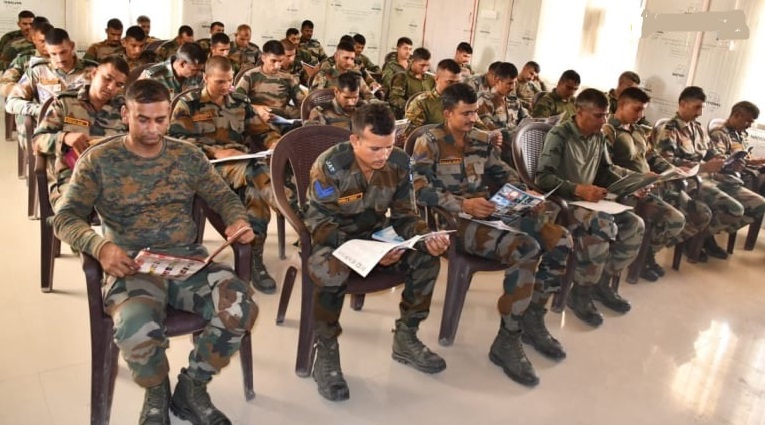 Agneepath Scheme replaced with Sainik Samman Scheme 2024, Defence Minister Rajnath Singh Relaunched Agniveer Scheme
Agneepath Scheme replaced with Sainik Samman Scheme 2024, Defence Minister Rajnath Singh Relaunched Agniveer Scheme
-
 Death in Dhaka: CIA Links Surface After Putin Shielded Modi During SCO Meet
Death in Dhaka: CIA Links Surface After Putin Shielded Modi During SCO Meet
-
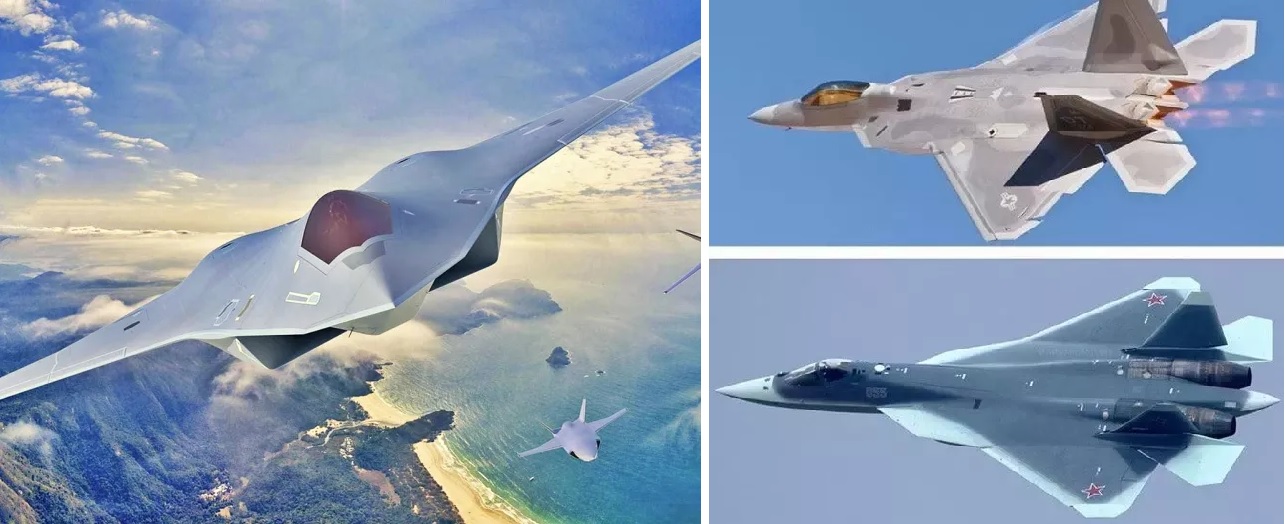 Key Differences Between 5th vs. 6th Generation Fighter Jets
Key Differences Between 5th vs. 6th Generation Fighter Jets
-
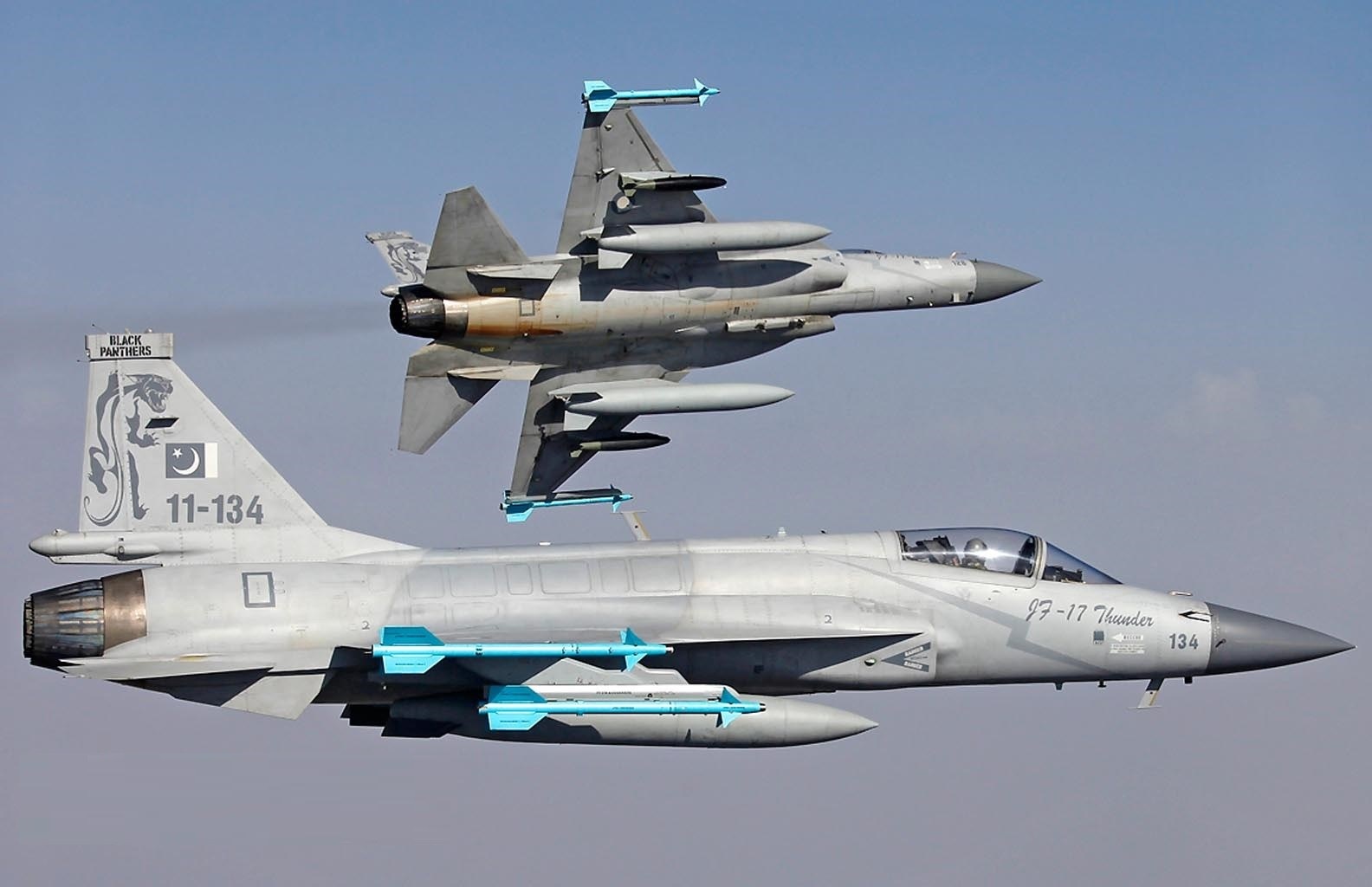 Pakistan Air Force to Unveil Stealth-Enhanced JF-17 Block 4 Fighter Jet by 2028
Pakistan Air Force to Unveil Stealth-Enhanced JF-17 Block 4 Fighter Jet by 2028
-
 India’s AMCA Engine Decision: Safran vs. Rolls-Royce Final Expected by 2025
India’s AMCA Engine Decision: Safran vs. Rolls-Royce Final Expected by 2025
-
 Pakistan Announces 15% Increase in Defence Budget for 2024-25 Amid Economic Crisis
Pakistan Announces 15% Increase in Defence Budget for 2024-25 Amid Economic Crisis
-
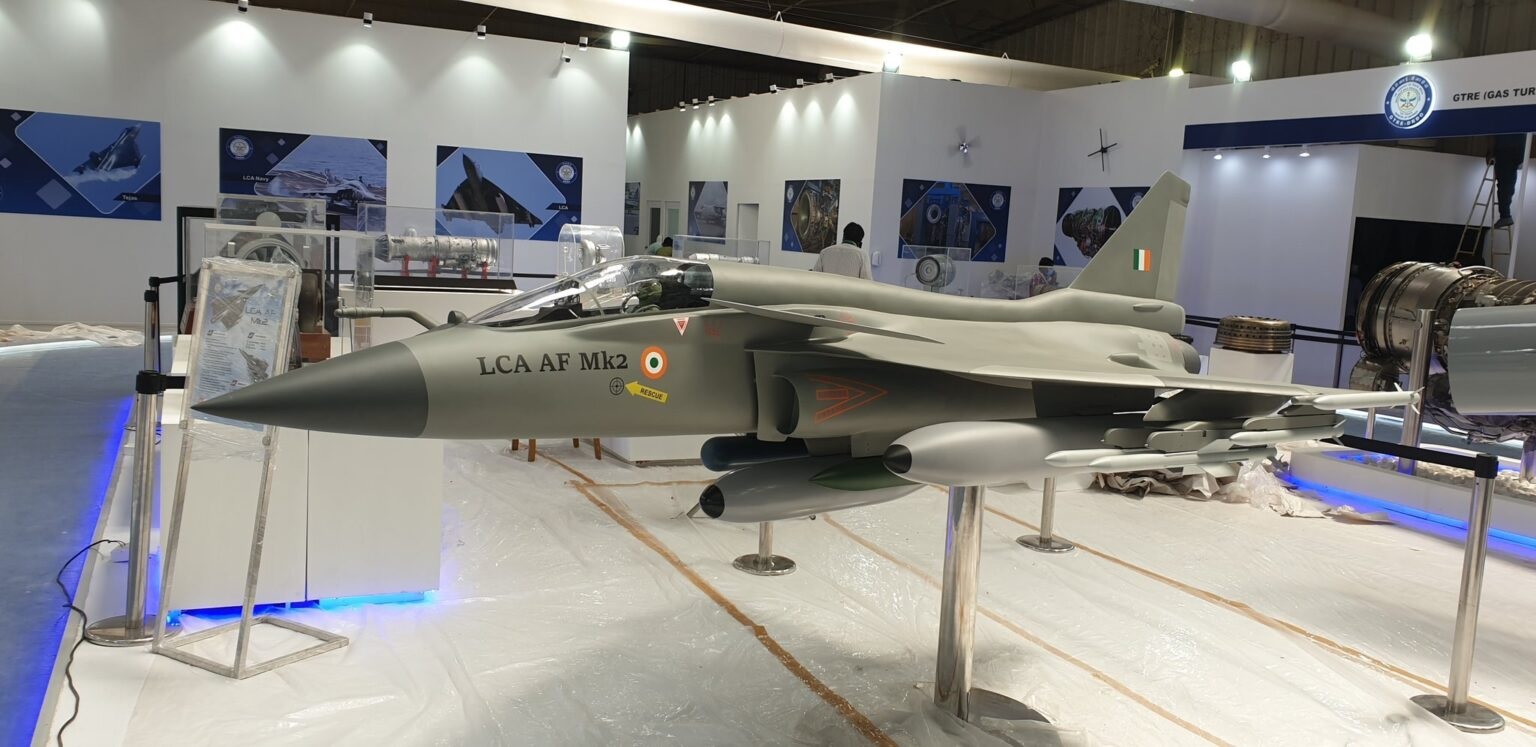 Tejas Mk2 Nears 2025 Rollout as HAL Ramps Up Final Assembly and System Integration
Tejas Mk2 Nears 2025 Rollout as HAL Ramps Up Final Assembly and System Integration
-
 India's TEDBF Program Takes Shape First Flight by 2028: Aiming for Naval Supremacy with Advanced Stealth and Technology
India's TEDBF Program Takes Shape First Flight by 2028: Aiming for Naval Supremacy with Advanced Stealth and Technology
Top Trending in 4 Days
-
 Ukrainian An-124 “Ruslan” Makes Secretive Landing in Israel, Fueling Speculation of Covert Military Support to Kyiv
Ukrainian An-124 “Ruslan” Makes Secretive Landing in Israel, Fueling Speculation of Covert Military Support to Kyiv
-
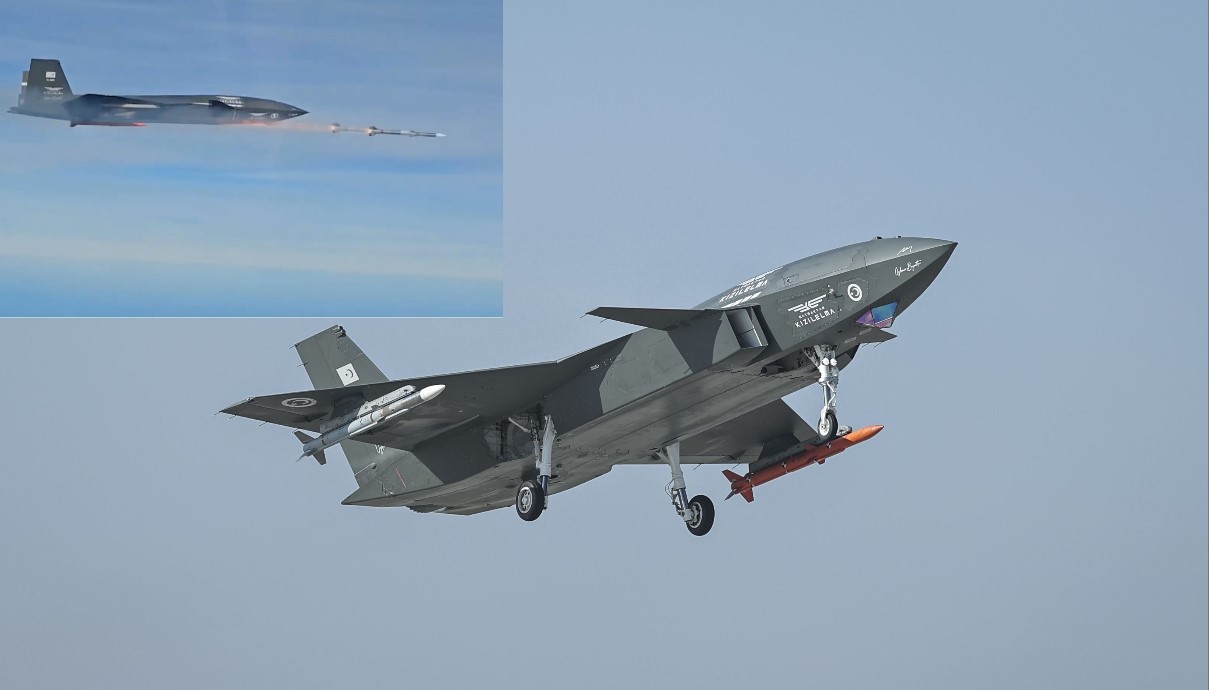 Türkiye’s Bayraktar Kizilelma Becomes First Unmanned Fighter to Shoot Down an Aerial Target with Air-to-Air Missile
Türkiye’s Bayraktar Kizilelma Becomes First Unmanned Fighter to Shoot Down an Aerial Target with Air-to-Air Missile
-
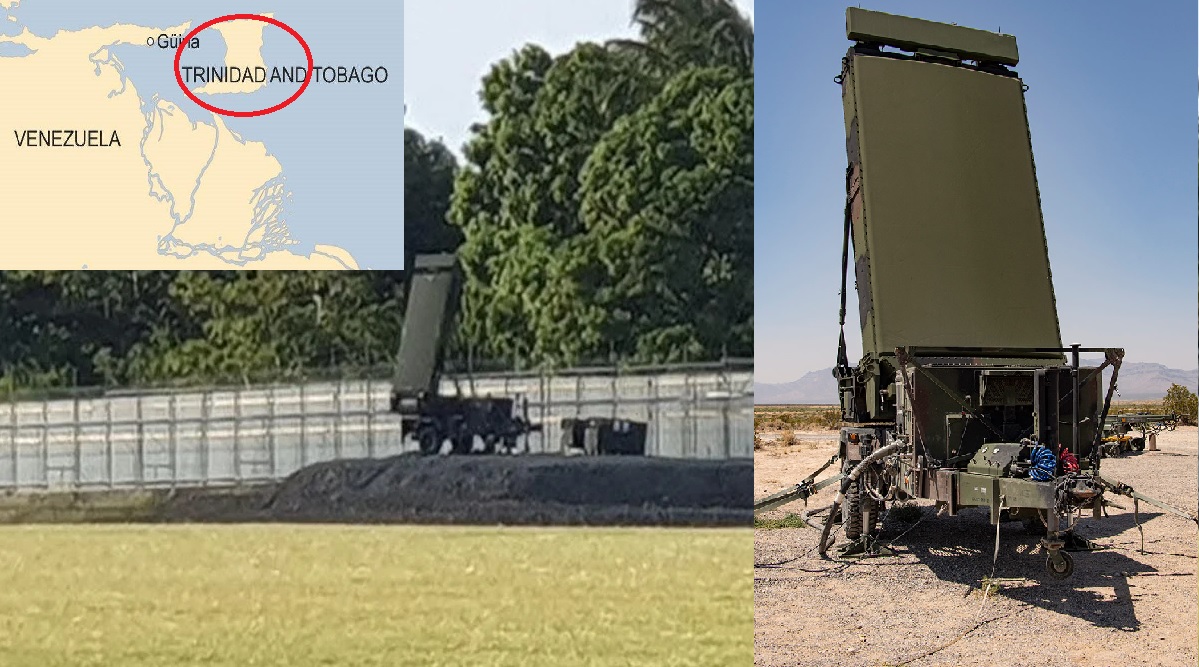 US Marines Install G/ATOR Radar in Tobago For Surveillance Over Southern Caribbean and Venezuela
US Marines Install G/ATOR Radar in Tobago For Surveillance Over Southern Caribbean and Venezuela
-
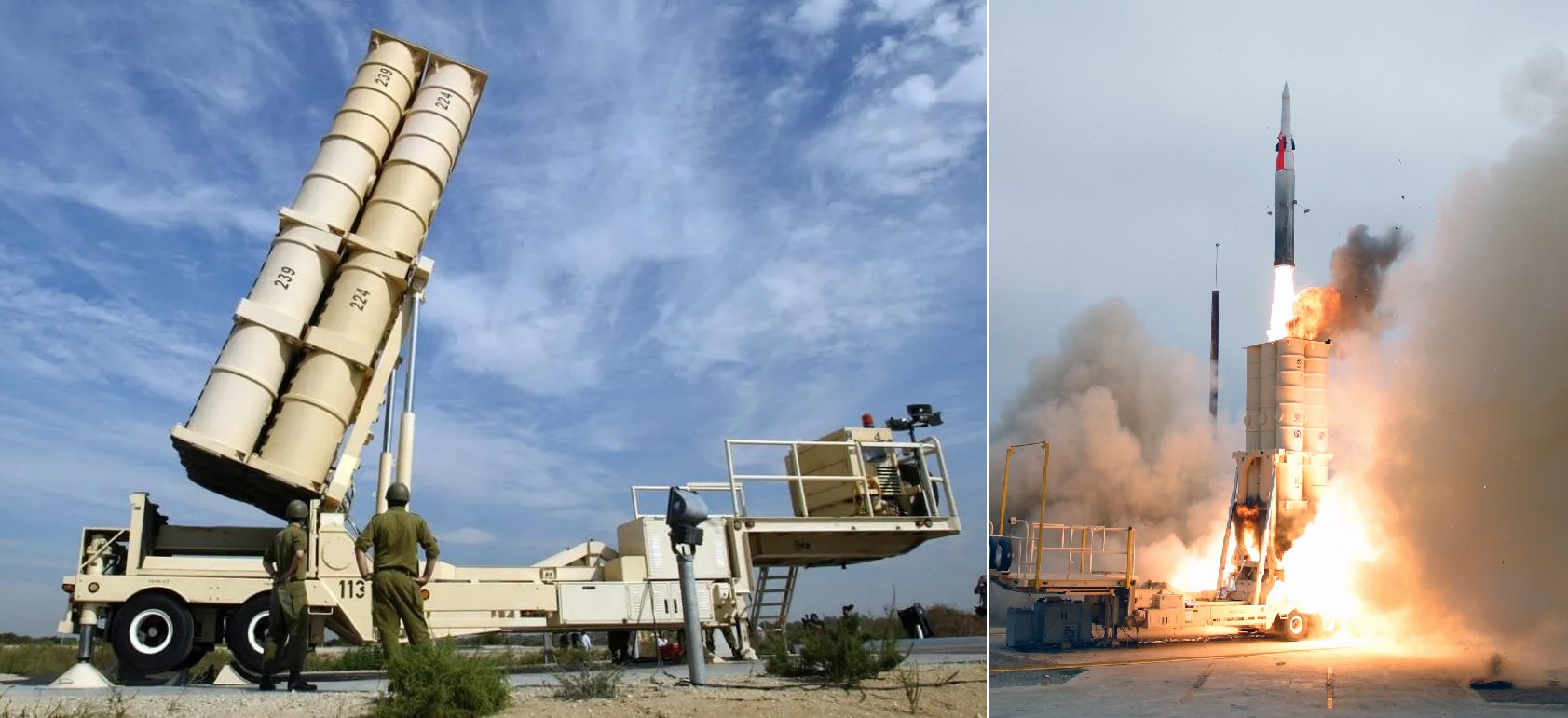 Germany Activates Israel’s Arrow-3, Europe’s First Space-Shield Against Ballistic Missiles
Germany Activates Israel’s Arrow-3, Europe’s First Space-Shield Against Ballistic Missiles
-
 Zelensky Under Pressure as MP Claims He Has Been “Ordered to Resign" Within This Month
Zelensky Under Pressure as MP Claims He Has Been “Ordered to Resign" Within This Month
-
 Venezuela Prepares Asymmetric War Plan: Sabotage, Ambushes, and Guerrilla Attacks Against a Possible US Strike
Venezuela Prepares Asymmetric War Plan: Sabotage, Ambushes, and Guerrilla Attacks Against a Possible US Strike
-
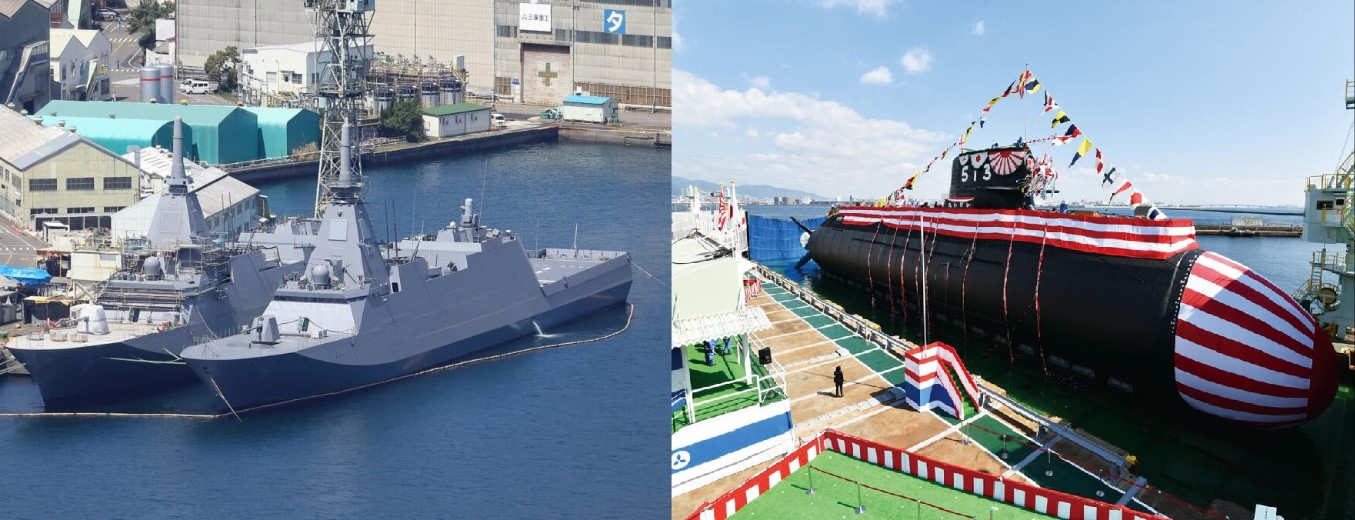 Japan Approves $5.4 billion Supplementary Defense Budget For Accelerate Frigate and Submarine Construction
Japan Approves $5.4 billion Supplementary Defense Budget For Accelerate Frigate and Submarine Construction
-
 America’s Secret F-47 “Ghost Eagle” Fighter Jet Fly With Five Armed Autonomous Drones
America’s Secret F-47 “Ghost Eagle” Fighter Jet Fly With Five Armed Autonomous Drones
